The News Literacy Project


Using the news to develop students’ critical thinking
Published on March 10, 2022 Updates
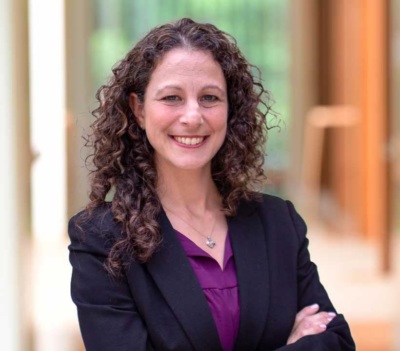
Pamela Brunskill
By Pamela Brunskill
Students today are immersed in a news and information landscape that pervades every aspect of their lives. From TikTok to Instagram to Twitter, they are inundated with posts, and many of them are not credible or legitimately grounded. It is difficult to know what is true. Because this environment is complex and riddled with misinformation, it provides a prime opportunity to authentically develop students’ critical thinking abilities.
Critical thinking defined
One of the most highly sought goals of educators is to get students to think critically. In a rough sense, this involves the skills and dispositions necessary to make an informed judgment. According to a meta-analysis on the subject, critical thinking is purposeful, methodical, and habitually inquisitive. Critical thinkers have the skills to interpret, analyze, and evaluate content; they are diligent and persistent in considering a question, and they approach life honestly and with an open mind.
While there is some debate whether the best approach to teaching critical thinking is through generic traits or through discipline-specific skills, a compromised approach allows students to develop both . If we follow the belief that students need context to accurately reason about a subject, then they must have some background knowledge in that subject. How else can they think critically about something? Further, how would that naive thinking compare to that of experts in the field? Regarding the news and information landscape, if students are going to think critically and be discerning with the content they share, then they must learn news literacy.
How to use news literacy to teach critical thinking
Step 1: develop disciplinary literacy in the news.
In an era of misinformation, students can evaluate information by learning how news is made. This includes explicit instruction in concepts and content such as identifying different types of information, recognizing the purpose or intent of pieces, understanding the watchdog role of the press, and recognizing quality arguments and evidence. It also includes explicit instruction of skills such as evaluating sources, identifying branded content, recognizing bias and motivated reasoning, and verifying evidence. Of course, students also need to demonstrate understanding of these concepts and practice these skills. In so doing, they gain disciplinary literacy, the notion of specialized reading practices for a field of study. Often, disciplinary literacy is framed as thinking like a mathematician, a historian , or a computer programmer . Regardless of the content area, students gain greater depth in their understanding of the underpinnings of that discipline. In this case, students learn to “think like a journalist.”
Example of developing disciplinary literacy: Jennifer Liang Twitter thread
Step 2: Teach topical content
Once students comprehend how news is made, they can deconstruct it and analyze its creation. But they also need the context surrounding the piece of news they’re reading and/or studying. To this end, teachers should provide explicit instruction in the topic at hand, whether it involves immigration, global warming, sports, health, statistics, or any other content area. This is where each discipline offers its own guidance, and as with all good teaching, this requires an effective approach to tackling reading comprehension . This might include studying vocabulary, writing about text through think sheets and short responses, and discussions, among other strategies. Then, students can explain a disciplinary concept such as immigration and explain why not all images of border walls are accurately portrayed in memes.
Why news literacy?
Of course, integrated studies between all subjects are possible, but there is a special partnership between English and social studies in relation to news literacy. The stakes are high: think about the consequences of misinformation as well as the potential for civic action. A lack of news literacy threatens democracy and our public health — just look at the conspiratorial thinking that led to the Capitol riots and erroneous claims about COVID-19 . Conversely, when individuals have the competency to judge reliable and credible news, they can take civic action such as correcting a piece of misinformation, contacting elected officials, and participating responsibly in political discussions. Being accurately informed is crucial to participating in a democracy.
Example of disciplinary-specific content : Conspiratorial Thinking poster
Critical thinking is critical in today’s world
Using the news in classrooms can authentically develop higher-level thinking skills and dispositions. Combining understanding of how journalism works along with topical content allows students to determine the credibility of information they encounter. This integration enables students to interpret, analyze, evaluate, explain, and make judgments — to think critically. By teaching news literacy, we can teach students the skills and habits of mind to not only navigate today’s information landscape, but also to navigate our society.
More Updates
Nlp’s veiga on cnn: how to detect ai-generated news stories.
In a CNN interview, the News Literacy Project offered strategies for determining whether news coverage is AI-generated. Christina Veiga, NLP’s senior director of media relations, explained how to read laterally – leaving one online source to read what others have to say about a topic or issue – and how to conduct a reverse image…
Published on Jul 3, 2024 NLP in the News
Bloomberg, CNN quote NLP experts on AI-generated news
News literacy experts warn that this use of artificial intelligence could lead to declining trust in news organizations.
Published on Jun 27, 2024 NLP in the News
Brunskill offers tips for civil conversations about misinformation on APM’s Marketplace Tech
In the “Decoding Democracy” series on American Public Media’s Marketplace Tech program, NLP’s senior manager of education design, Pamela Brunskill, discussed how to have a constructive conversation with loved ones who may be misled by misinformation.
Search Close
The Use of Critical Thinking to Identify Fake News: A Systematic Literature Review
- Conference paper
- First Online: 01 April 2020
- Cite this conference paper

- Paul Machete 14 &
- Marita Turpin ORCID: orcid.org/0000-0002-4425-2010 14
Part of the book series: Lecture Notes in Computer Science ((LNISA,volume 12067))
Included in the following conference series:
- Conference on e-Business, e-Services and e-Society
48k Accesses
25 Altmetric
With the large amount of news currently being published online, the ability to evaluate the credibility of online news has become essential. While there are many studies involving fake news and tools on how to detect it, there is a limited amount of work that focuses on the use of information literacy to assist people to critically access online information and news. Critical thinking, as a form of information literacy, provides a means to critically engage with online content, for example by looking for evidence to support claims and by evaluating the plausibility of arguments. The purpose of this study is to investigate the current state of knowledge on the use of critical thinking to identify fake news. A systematic literature review (SLR) has been performed to identify previous studies on evaluating the credibility of news, and in particular to see what has been done in terms of the use of critical thinking to evaluate online news. During the SLR’s sifting process, 22 relevant studies were identified. Although some of these studies referred to information literacy, only three explicitly dealt with critical thinking as a means to identify fake news. The studies on critical thinking noted critical thinking as an essential skill for identifying fake news. The recommendation of these studies was that information literacy be included in academic institutions, specifically to encourage critical thinking.
You have full access to this open access chapter, Download conference paper PDF
Similar content being viewed by others

Approaches to Identify Fake News: A Systematic Literature Review
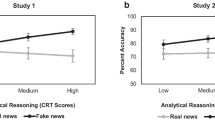
The role of analytical reasoning and source credibility on the evaluation of real and fake full-length news articles

News, Fake News, and Critical Authority
- Critical thinking
- Information literacy
- Systematic literature review
1 Introduction
The information age has brought a significant increase in available sources of information; this is in line with the unparalleled increase in internet availability and connection, in addition to the accessibility of technological devices [ 1 ]. People no longer rely on television and print media alone for obtaining news, but increasingly make use of social media and news apps. The variety of information sources that we have today has contributed to the spread of alternative facts [ 1 ]. With over 1.8 billion active users per month in 2016 [ 2 ], Facebook accounted for 20% of total traffic to reliable websites and up to 50% of all the traffic to fake news sites [ 3 ]. Twitter comes second to Facebook, with over 400 million active users per month [ 2 ]. Posts on social media platforms such as Facebook and Twitter spread rapidly due to how they attempt to grab the readers’ attention as quickly as possible, with little substantive information provided, and thus create a breeding ground for the dissemination of fake news [ 4 ].
While social media is a convenient way of accessing news and staying connected to friends and family, it is not easy to distinguish real news from fake news on social media [ 5 ]. Social media continues to contribute to the increasing distribution of user-generated information; this includes hoaxes, false claims, fabricated news and conspiracy theories, with primary sources being social media platforms such as Facebook and Twitter [ 6 ]. This means that any person who is in possession of a device, which can connect to the internet, is potentially a consumer or distributor of fake news. While social media platforms and search engines do not encourage people to believe the information being circulated, they are complicit in people’s propensity to believe the information they come across on these platforms, without determining their validity [ 6 ]. The spread of fake news can cause a multitude of damages to the subject; varying from reputational damage of an individual, to having an effect on the perceived value of a company [ 7 ].
The purpose of this study is to investigate the use of critical thinking methods to detect news stories that are untrue or otherwise help to develop a critical attitude to online news. This work was performed by means of a systematic literature review (SLR). The paper is presented as follows. The next section provides background information on fake news, its importance in the day-to-day lives of social media users and how information literacy and critical thinking can be used to identify fake news. Thereafter, the SLR research approach is discussed. Following this, the findings of the review are reported, first in terms of descriptive statistics and the in terms of a thematic analysis of the identified studies. The paper ends with the Conclusion and recommendations.
2 Background: Fake News, Information Literacy and Critical Thinking
This section discusses the history of fake news, the fake news that we know today and the role of information literacy can be used to help with the identification of fake news. It also provides a brief definition of critical thinking.
2.1 The History of Fake News
Although fake news has received increased attention recently, the term has been used by scholars for many years [ 4 ]. Fake news emerged from the tradition of yellow journalism of the 1890s, which can be described as a reliance on the familiar aspects of sensationalism—crime news, scandal and gossip, divorces and sex, and stress upon the reporting of disasters, sports sensationalism as well as possibly satirical news [ 5 ]. The emergence of online news in the early 2000s raised concerns, among them being that people who share similar ideologies may form “echo chambers” where they can filter out alternative ideas [ 2 ]. This emergence came about as news media transformed from one that was dominated by newspapers printed by authentic and trusted journalists to one where online news from an untrusted source is believed by many [ 5 ]. The term later grew to describe “satirical news shows”, “parody news shows” or “fake-news comedy shows” where a television show, or segment on a television show was dedicated to political satire [ 4 ]. Some of these include popular television shows such as The Daily Show (now with Trevor Noah), Saturday Night Live ’s “The Weekend Update” segment, and other similar shows such as Last Week Tonight with John Oliver and The Colbert Report with Stephen Colbert [ 4 ]. News stories in these shows were labelled “fake” not because of their content, but for parodying network news for the use of sarcasm, and using comedy as a tool to engage real public issues [ 4 ]. The term “Fake News” further became prominent during the course of the 2016 US presidential elections, as members of the opposing parties would post incorrect news headlines in order to sway the decision of voters [ 6 ].
2.2 Fake News Today
The term fake news has a more literal meaning today [ 4 ]. The Macquarie Dictionary named fake news the word of the year for 2016 [ 8 ]. In this dictionary, fake news is described it as a word that captures a fascinating evolution in the creation of deceiving content, also allowing people to believe what they see fit. There are many definitions for the phrase, however, a concise description of the term can be found in Paskin [ 4 ] who states that certain news articles originating from either social media or mainstream (online or offline) platforms, that are not factual, but are presented as such and are not satirical, are considered fake news. In some instances, editorials, reports, and exposés may be knowingly disseminating information with intent to deceive for the purposes of monetary or political benefit [ 4 ].
A distinction amongst three types of fake news can be made on a conceptual level, namely: serious fabrications, hoaxes and satire [ 3 ]. Serious fabrications are explained as news items written on false information, including celebrity gossip. Hoaxes refer to false information provided via social media, aiming to be syndicated by traditional news platforms. Lastly, satire refers to the use of humour in the news to imitate real news, but through irony and absurdity. Some examples of famous satirical news platforms in circulation in the modern day are The Onion and The Beaverton , when contrasted with real news publishers such as The New York Times [ 3 ].
Although there are many studies involving fake news and tools on how to detect it, there is a limited amount of academic work that focuses on the need to encourage information literacy so that people are able to critically access the information they have been presented, in order to make better informed decisions [ 9 ].
Stein-Smith [ 5 ] urges that information/media literacy has become a more critical skill since the appearance of the notion of fake news has become public conversation. Information literacy is no longer a nice-to-have proficiency but a requirement for interpreting news headlines and participation in public discussions. It is essential for academic institutions of higher learning to present information literacy courses that will empower students and staff members with the prerequisite tools to identify, select, understand and use trustworthy information [ 1 ]. Outside of its academic uses, information literacy is also a lifelong skill with multiple applications in everyday life [ 5 ]. The choices people make in their lives, and opinions they form need to be informed by the appropriate interpretation of correct, opportune, and significant information [ 5 ].
2.3 Critical Thinking
Critical thinking covers a broad range of skills that includes the following: verbal reasoning skills; argument analysis; thinking as hypothesis testing; dealing with likelihood and uncertainties; and decision making and problem solving skills [ 10 ]. For the purpose of this study, where we are concerned with the evaluation of the credibility of online news, the following definition will be used: critical thinking is “the ability to analyse and evaluate arguments according to their soundness and credibility, respond to arguments and reach conclusions through deduction from given information” [ 11 ]. In this study, we want to investigate how the skills mentioned by [ 11 ] can be used as part of information literacy, to better identify fake news.
The next section presents the research approach that was followed to perform the SLR.
3 Research Method
This section addresses the research question, the search terms that were applied to a database in relation to the research question, as well as the search criteria used on the search results. The following research question was addressed in this SLR:
What is the role of critical thinking in identifying fake news, according to previous studies?
The research question was identified in accordance to the research topic. The intention of the research question is to determine if the identified studies in this review provide insights into the use of critical thinking to evaluate the credibility of online news and in particular to identify fake news.
Delimitations.
In the construction of this SLR, the following definitions of fake news and other related terms have been excluded, following the suggestion of [ 2 ]:
Unintentional reporting mistakes;
Rumours that do not originate from a particular news article;
Conspiracy theories;
Satire that is unlikely to be misconstrued as factual;
False statements by politicians; and
Reports that are slanted or misleading, but not outright false.
Search Terms.
The database tool used to extract sources to conduct the SLR was Google Scholar ( https://scholar.google.com ). The process for extracting the sources involved executing the search string on Google Scholar and the retrieval of the articles and their meta-data into a tool called Mendeley, which was used for reference management.
The search string used to retrieve the sources was defined below:
(“critical think*” OR “critically (NEAR/2) reason*” OR “critical (NEAR/2) thought*” OR “critical (NEAR/2) judge*” AND “fake news” AND (identify* OR analyse* OR find* OR describe* OR review).
To construct the search criteria, the following factors have been taken into consideration: the research topic guided the search string, as the key words were used to create the base search criteria. The second step was to construct the search string according to the search engine requirements on Google Scholar.
Selection Criteria.
The selection criteria outlined the rules applied in the SLR to identify sources, narrow down the search criteria and focus the study on a specific topic. The inclusion and exclusion criteria are outlined in Table 1 to show which filters were applied to remove irrelevant sources.
Source Selection.
The search criteria were applied on the online database and 91 papers were retrieved. The criteria in Table 1 were used on the search results in order to narrow down the results to appropriate papers only.
PRISMA Flowchart.
The selection criteria included four stages of filtering and this is depicted in Fig. 1 . In then Identification stage, the 91 search results from Google Scholar were returned and 3 sources were derived from the sources already identified from the search results, making a total of 94 available sources. In the screening stage, no duplicates were identified. After a thorough screening of the search results, which included looking at the availability of the article (free to use), 39 in total records were available – to which 55 articles were excluded. Of the 39 articles, nine were excluded based on their titles and abstract being irrelevant to the topic in the eligibility stage. A final list of 22 articles was included as part of this SLR. As preparation for the data analysis, a data extraction table was made that classified each article according to the following: article author; article title; theme (a short summary of the article); year; country; and type of publication. The data extraction table assisted in the analysis of findings as presented in the next section.
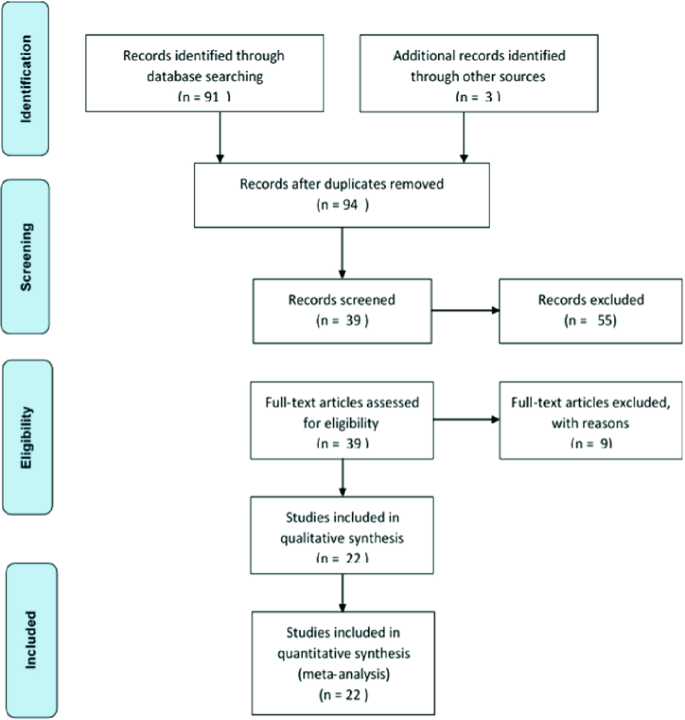
PRISMA flowchart
4 Analysis of Findings
4.1 descriptive statistics.
Due to the limited number of relevant studies, the information search did not have a specified start date. Articles were included up to 31 August 2019. The majority of the papers found were published in 2017 (8 papers) and 2018 (9 papers). This is in line with the term “fake news” being announced the word of the year in the 2016 [ 8 ].
The selected papers were classified into themes. Figure 2 is a Venn diagram that represents the overlap of articles by themes across the review. Articles that fall under the “fake news” theme had the highest number of occurrences, with 11 in total. Three articles focused mainly on “Critical Thinking”, and “Information Literacy” was the main focus of four articles. Two articles combined all three topics of critical thinking, information literacy, and fake news.
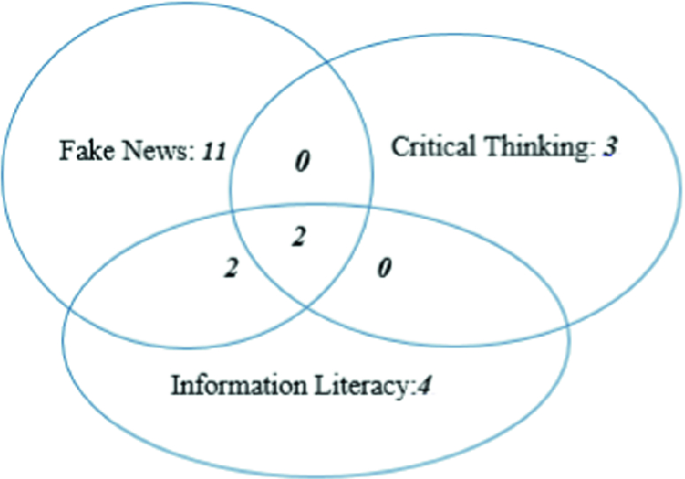
Venn diagram depicting the overlap of articles by main focus
An analysis of the number of articles published per country indicate that the US had a dominating amount of articles published on this topic, a total of 17 articles - this represents 74% of the selected articles in this review. The remaining countries where articles were published are Australia, Germany, Ireland, Lebanon, Saudi Arabia, and Sweden - with each having one article published.
In terms of publication type, 15 of the articles were journal articles, four were reports, one was a thesis, one was a magazine article and one, a web page.
4.2 Discussion of Themes
The following emerged from a thematic analysis of the articles.
Fake News and Accountability.
With the influence that social media has on the drive of fake news [ 2 ], who then becomes responsible for the dissemination and intake of fake news by the general population? The immediate assumption is that in the digital age, social media platforms like Facebook and Twitter should be able to curate information, or do some form of fact-checking when posts are uploaded onto their platforms [ 12 ], but that leans closely to infringing on freedom of speech. While different authors agree that there need to be measures in place for the minimisation of fake news being spread [ 12 , 13 ], where that accountability lies differs between the authors. Metaxas and Mustafaraj [ 13 ] aimed to develop algorithms or plug-ins that can assist in trust and postulated that consumers should be able to identify misinformation, thus making an informed decision on whether to share that information or not. Lazer et al. [ 12 ] on the other hand, believe the onus should be on the platform owners to put restrictions on the kind of data distributed. Considering that the work by Metaxas and Mustafaraj [ 13 ] was done seven years ago, one can conclude that the use of fact-checking algorithms/plug-ins has not been successful in curbing the propulsion of fake news.
Fake News and Student Research.
There were a total of four articles that had a focus on student research in relation to fake news. Harris, Paskin and Stein-Smith [ 4 , 5 , 14 ] all agree that students do not have the ability to discern between real and fake news. A Stanford History Education Group study reveals that students are not geared up for distinguishing real from fake news [ 4 ]. Most students are able to perform a simple Google search for information; however, they are unable to identify the author of an online source, or if the information is misleading [ 14 ]. Furthermore, students are not aware of the benefits of learning information literacy in school in equipping them with the skills required to accurately identify fake news [ 5 ]. At the Metropolitan Campus of Fairleigh Dickson University, librarians have undertaken the role of providing training on information literacy skills for identifying fake news [ 5 ].
Fake News and Social Media.
A number of authors [ 6 , 15 ] are in agreement that social media, the leading source of news, is the biggest driving force for fake news. It provides substantial advantage to broadcast manipulated information. It is an open platform of unfiltered editors and open to contributions from all. According to Nielsen and Graves as well as Janetzko, [ 6 , 15 ], people are unable to identify fake news correctly. They are likely to associate fake news with low quality journalism than false information designed to mislead. Two articles, [ 15 ] and [ 6 ] discussed the role of critical thinking when interacting on social media. Social media presents information to us that has been filtered according to what we already consume, thereby making it a challenge for consumers to think critically. The study by Nielsen and Graves [ 6 ] confirm that students’ failure to verify incorrect online sources requires urgent attention as this could indicate that students are a simple target for presenting manipulated information.
Fake News That Drive Politics.
Two studies mention the effect of social and the spread of fake news, and how it may have propelled Donald Trump to win the US election in 2016 [ 2 , 16 ]. Also, [ 8 ] and [ 2 ] mention how a story on the Pope supporting Trump in his presidential campaign, was widely shared (more than a million times) on Facebook in 2016. These articles also point out how in the information age, fact-checking has become relatively easy, but people are more likely to trust their intuition on news stories they consume, rather than checking the reliability of a story. The use of paid trolls and Russian bots to populate social media feeds with misinformation in an effort to swing the US presidential election in Donald Trump’s favour, is highlighted [ 16 ]. The creation of fake news, with the use of alarmist headlines (“click bait”), generates huge traffic into the original websites, which drives up advertising revenue [ 2 ]. This means content creators are compelled to create fake news, to drive ad revenue on their websites - even though they may not be believe in the fake news themselves [ 2 ].
Information Literacy.
Information literacy is when a person has access to information, and thus can process the parts they need, and create ways in which to best use the information [ 1 ]. Teaching students the importance of information literacy skills is key, not only for identifying fake news but also for navigating life aspects that require managing and scrutinising information, as discussed by [ 1 , 17 ], and [ 9 ]. Courtney [ 17 ] highlights how journalism students, above students from other disciplines, may need to have some form of information literacy incorporated into their syllabi to increase their awareness of fake news stories, creating a narrative of being objective and reliable news creators. Courtney assessed different universities that teach journalism and media-related studies, and established that students generally lack awareness on how useful library services are in offering services related to information literacy. Courtney [ 17 ] and Rose-Wiles [ 9 ] discuss how the use of library resources should be normalised to students. With millennials and generation Z having social media as their first point of contact, Rose-Wiles [ 9 ] urges universities, colleges and other academic research institutes to promote the use of more library resources than those from the internet, to encourage students to lean on reliable sources. Overall, this may prove difficult, therefore Rose-Wiles [ 9 ] proposes that by teaching information literacy skills and critical thinking, students can use these skills to apply in any situation or information source.
Referred to as “truth decay”, people have reached a point where they no longer need to agree with facts [ 18 ]. Due to political polarisation, the general public hold the opinion of being part of an oppressed group of people, and therefore will believe a political leader who appeals to that narrative [ 18 ]. There needs to be tangible action put into driving civil engagement, to encourage people to think critically, analyse information and not believe everything they read.
Critical Thinking.
Only three of the articles had critical thinking as a main theme. Bronstein et al. [ 19 ] discuss how certain dogmatic and religious beliefs create a tendency in individuals to belief any information given, without them having a need to interrogate the information further and then deciding ion its veracity. The article further elaborates how these individuals are also more likely to engage in conspiracy theories, and tend to rationalise absurd events. Bronstein et al.’s [ 19 ] study conclude that dogmatism and religious fundamentalism highly correlate with a belief in fake news. Their study [ 19 ] suggests the use of interventions that aim to increase open-minded thinking, and also increase analytical thinking as a way to help religious, curb belief in fake news. Howlett [ 20 ] describes critical thinking as evidence-based practice, which is taking the theories of the skills and concepts of critical thinking and converting those for use in everyday applications. Jackson [ 21 ] explains how the internet purposely prides itself in being a platform for “unreviewed content”, due to the idea that people may not see said content again, therefore it needs to be attention-grabbing for this moment, and not necessarily accurate. Jackson [ 21 ] expands that social media affected critical thinking in how it changed the view on published information, what is now seen as old forms of information media. This then presents a challenge to critical thinking in that a large portion of information found on the internet is not only unreliable, it may also be false. Jackson [ 21 ] posits that one of the biggest dangers to critical thinking may be that people have a sense of perceived power for being able to find the others they seek with a simple web search. People are no longer interested in evaluation the credibility of the information they receive and share, and thus leading to the propagation of fake news [ 21 ].
5 Discussion of Findings
The aggregated data in this review has provided insight into how fake news is perceived, the level of attention it is receiving and the shortcomings of people when identifying fake news. Since the increase in awareness of fake news in 2016, there has been an increase in academic focus on the subject, with most of the articles published between 2017 and 2018. Fifty percent of the articles released focused on the subject of fake news, with 18% reflecting on information literacy, and only 13% on critical thinking.
The thematic discussion grouped and synthesised the articles in this review according to the main themes of fake news, information literacy and critical thinking. The Fake news and accountability discussion raised the question of who becomes accountable for the spreading of fake news between social media and the user. The articles presented a conclusion that fact-checking algorithms are not successful in reducing the dissemination of fake news. The discussion also included a focus on fake news and student research , whereby a Stanford History Education Group study revealed that students are not well educated in thinking critically and identifying real from fake news [ 4 ]. The Fake news and social media discussion provided insight on social media is the leading source of news as well as a contributor to fake news. It provides a challenge for consumers who are not able to think critically about online news, or have basic information literacy skills that can aid in identifying fake news. Fake news that drive politics highlighted fake news’ role in politics, particularly the 2016 US presidential elections and the influence it had on the voters [ 22 ].
Information literacy related publications highlighted the need for educating the public on being able to identify fake news, as well as the benefits of having information literacy as a life skill [ 1 , 9 , 17 ]. It was shown that students are often misinformed about the potential benefits of library services. The authors suggested that university libraries should become more recognised and involved as role-players in providing and assisting with information literacy skills.
The articles that focused on critical thinking pointed out two areas where a lack of critical thinking prevented readers from discerning between accurate and false information. In the one case, it was shown that people’s confidence in their ability to find information online gave made them overly confident about the accuracy of that information [ 21 ]. In the other case, it was shown that dogmatism and religious fundamentalism, which led people to believe certain fake news, were associated with a lack of critical thinking and a questioning mind-set [ 21 ].
The articles that focused on information literacy and critical thinking were in agreement on the value of promoting and teaching these skills, in particular to the university students who were often the subjects of the studies performed.
6 Conclusion
This review identified 22 articles that were synthesised and used as evidence to determine the role of critical thinking in identifying fake news. The articles were classified according to year of publication, country of publication, type of publication and theme. Based on the descriptive statistics, fake news has been a growing trend in recent years, predominantly in the US since the presidential election in 2016. The research presented in most of the articles was aimed at the assessment of students’ ability to identify fake news. The various studies were consistent in their findings of research subjects’ lack of ability to distinguish between true and fake news.
Information literacy emerged as a new theme from the studies, with Rose-Wiles [ 9 ] advising academic institutions to teach information literacy and encourage students to think critically when accessing online news. The potential role of university libraries to assist in not only teaching information literacy, but also assisting student to evaluate the credibility of online information, was highlighted. The three articles that explicitly dealt with critical thinking, all found critical thinking to be lacking among their research subjects. They further indicated how this lack of critical thinking could be linked to people’s inability to identify fake news.
This review has pointed out people’s general inability to identify fake news. It highlighted the importance of information literacy as well as critical thinking, as essential skills to evaluate the credibility of online information.
The limitations in this review include the use of students as the main participants in most of the research - this would indicate a need to shift the academic focus towards having the general public as participants. This is imperative because anyone who possesses a mobile device is potentially a contributor or distributor of fake news.
For future research, it is suggested that the value of the formal teaching of information literacy at universities be further investigated, as a means to assist students in assessing the credibility of online news. Given the very limited number of studies on the role of critical thinking to identify fake news, this is also an important area for further research.
Taala, W., Franco Jr., F.B., Teresa, P.H.S.: Library literacy program: library as battleground for fighting fakenews. Open Access Libr. J. 6 , e5296 (2019)
Google Scholar
Allcott, H., Gentzkow, M.: Social media and fake news in the 2016 election. J. Econ. Perspect. 31 (2), 211–236 (2017)
Article Google Scholar
Pérez-Rosas, V., Kleinberg, B., Lefevre, A., Mihalcea, R.: Automatic detection of fake news, arXiv preprint arXiv:1708.07104 (2017)
Paskin, D.: Real or fake news: who knows? J. Soc. Media Soc. 7 (2), 252–273 (2018)
Stein-Smith, K.: Librarians, information literacy, and fake news. Strateg. Libr. 37 , 1–4 (2017)
Nielsen, R.K., Graves, L.: News you don’t believe”: audience perspectives on fake news. Reuters Institute for the Study of Journalism (2017). https://reutersinstitute.politics.ox.ac.uk/ourresearch/news-you-dont-believe-audience-perspectives-fake-news
Vosoughi, S., Roy, D., Aral, S.: The spread of true and false news online. Science 359 (6380), 1146–1151 (2018)
Hunt, E.: Fake news’ named word of the year by Macquarie Dictionary. The Guardian (2017). https://www.theguardian.com/australia-news/2017/jan/25/fake-news-named-word-of-the-year-by-macquarie-dictionary
Rose-Wiles, L.M.: Reflections on fake news, librarians, and undergraduate research. Ref. User Serv. Q. 57 (3), 200–204 (2018)
Halpern, D.F.: Teaching critical thinking for transfer across domains: disposition, skills, structure training, and metacognitive monitoring. Am. Psychol. 53 (4), 449 (1998)
Tiruneh, D.T., Verburgh, A., Elen, J.: Effectiveness of critical thinking instruction in higher education: a systematic review of intervention studies. High. Educ. Stud. 4 (1), 1–17 (2014)
Lazer, D.M., et al.: The science of fake news. Science 359 (6380), 1094–1096 (2018)
Metaxas, P.T., Mustafaraj, E.: Trails of trustworthiness in real-time streams (extended summary) (2012)
Harris, F.J.: CIPA/Internet filtering. In: The International Encyclopedia of Media Literacy, pp. 1–11 (2019)
Janetzko, D.: Social bots and fake news as (not) seen from the viewpoint of digital education frameworks. MedienPädagogik: Zeitschrift für Theorie und Praxis der Medienbildung, pp. 61–80 (2017)
Bodine-Baron, E., Helmus, T.C., Radin, A., Treyger, E.: Countering Russian Social Media Influence. RAND Corporation, Santa Monica (2018)
Book Google Scholar
Courtney, I.: In an era of fake news, information literacy has a role to play in journalism education in Ireland. Dublin Business School (2017)
O’Brien, S., Rich, M.D., Fukuyama, F.: The Perils of Truth Decay: Q&A with Three RAND Leaders (2018). https://www.rand.org/blog/rand-review/2018/02/the-perils-of-truth-decay-qa-with-three-rand-leaders.html . Accessed 17 Nov 2019
Bronstein, M.V., Pennycook, G., Bear, A., Rand, D.G., Cannon, T.D.: Belief in fake news is associated with delusionality, dogmatism, religious fundamentalism, and reduced analytic thinking. J. Appl. Res. Mem. Cogn. 8 (1), 108–117 (2019)
Howlett, B.: What evidence-based practice is and why it matters. In: Evidence-Based Practice for Health Professionals: An Interprofessional Approach, pp. 5–30 (2014)
Jackson, S.: How a Critical Thinker Uses the Web, Windsor Studies in Argumentation (2019)
Koulolias, V., Jonathan, G.M., Fernandez, M., Sotirchos, D.: Combating Misinformation: An ecosystem in co-creation. OECD Publishing (2018)
Download references
Author information
Authors and affiliations.
Department of Informatics, University of Pretoria, Pretoria, 0001, South Africa
Paul Machete & Marita Turpin
You can also search for this author in PubMed Google Scholar
Corresponding author
Correspondence to Marita Turpin .
Editor information
Editors and affiliations.
University of Pretoria, Pretoria, South Africa
Marié Hattingh
Machdel Matthee
Hanlie Smuts
University of Agder, Kristiansand, Norway
Ilias Pappas
Swansea University, Swansea, UK
Yogesh K. Dwivedi
University of Turku, Turku, Finland
Matti Mäntymäki
Rights and permissions
Reprints and permissions
Copyright information
© 2020 IFIP International Federation for Information Processing
About this paper
Cite this paper.
Machete, P., Turpin, M. (2020). The Use of Critical Thinking to Identify Fake News: A Systematic Literature Review. In: Hattingh, M., Matthee, M., Smuts, H., Pappas, I., Dwivedi, Y.K., Mäntymäki, M. (eds) Responsible Design, Implementation and Use of Information and Communication Technology. I3E 2020. Lecture Notes in Computer Science(), vol 12067. Springer, Cham. https://doi.org/10.1007/978-3-030-45002-1_20
Download citation
DOI : https://doi.org/10.1007/978-3-030-45002-1_20
Published : 01 April 2020
Publisher Name : Springer, Cham
Print ISBN : 978-3-030-45001-4
Online ISBN : 978-3-030-45002-1
eBook Packages : Computer Science Computer Science (R0)
Share this paper
Anyone you share the following link with will be able to read this content:
Sorry, a shareable link is not currently available for this article.
Provided by the Springer Nature SharedIt content-sharing initiative
- Publish with us
Policies and ethics
Societies and partnerships

- Find a journal
- Track your research

- Interactive Videos
- Overview & Comparison
- THINKING PRO - Curriculum Unit
- Benefits for School Admin
- Benefits for Teachers
- Social Studies
- English Language Learners
- Foundation Giving
- Corporate Giving
- Individual Giving
- Partnerships
The Importance of Critical Thinking for News Media Literacy
With news available at the tap of a finger, keyboard, or remote, we are often exposed to a barrage of news media. Some of it is high quality, informational news, while other pieces may be riddled with biases, inaccuracies, and misinformation. That’s why it’s so important for students to learn to properly evaluate the news they’re consuming. Read on for an exploration of news media literacy and the importance of critical thinking in supporting it.
News Media Literacy
News media literacy is the ability to critically analyze, evaluate, and interpret the information presented in news media. It involves understanding how news is produced, identifying bias and misinformation, and being able to distinguish between fact and opinion. In our modern world, where information is instantly available and constantly changing, news media literacy has become an essential skill for individuals of all ages to navigate the media landscape and make informed decisions.
Students being taught news media literacy develop a variety of interrelated and crucial skills and knowledge. They learn to identify when news sources are presenting biased or misleading information and to seek out additional sources to confirm or refute claims. News literacy also helps students understand how news is produced and distributed, including the role of journalists, media organizations, and the impact of social media on the news cycle.
A study in the Journal of Media Literacy Education found that highly news literate teens were:
- More intrinsically motivated to consume news
- More skeptical
- More knowledgeable about current events
This is important because it can help prevent the spread of misinformation and disinformation, both of which can have serious consequences, such as spreading false information about health, elections, or social issues. News media literacy skills can help students recognize harmful reporting or sharing, and take steps to stop their spread.
The difference news media literacy makes is not limited to the student alone, but can also impact their wider community. Authors Hobbs et al. explore this concept in their article “Learning to Engage: How Positive Attitudes about the News, Media Literacy, and Video Production Contribute to Adolescent Civic Engagement.” They found that “the best predictors of the intent to participate in civic engagement are having positive attitudes about news, current events, reporting, and journalism.”
Given its importance and wide-ranging impact, news media literacy is an essential part of education today. Here’s how teachers can use critical thinking to build up news literacy—and vice versa—in their students.
Critical Thinking Skills for News Literacy
Critical thinking is a key component of news media literacy, as it allows individuals to assess the accuracy and credibility of news sources, identify biases and misinformation, and make informed decisions. Critical thinking involves questioning assumptions, evaluating evidence, and considering multiple perspectives, which are all crucial skills for navigating our complex and constantly evolving media landscape. Let’s explore these critical thinking skills and their impact on news literacy in more depth.
Evaluating Sources and Evidence
One essential critical thinking skill that supports news literacy is the ability to evaluate sources. In today's world, where anyone can publish information online, it is important to be able to distinguish between credible sources and those that lack credibility. This means understanding the differences between primary and secondary sources, recognizing when a source is biased or unreliable, and evaluating the credentials of the author or publisher.
Being able to evaluate sources and evidence for credibility and accuracy allows students to identify fake news and other harmful media. Research on fake news and critical thinking highlights critical thinking as “an essential skill for identifying fake news.”
Analyzing Information
Another critical thinking skill that supports news literacy is the ability to analyze information. This involves breaking down complex information into its component parts, evaluating the evidence presented, and considering the implications of the information. For example, if a news article presents statistics about a particular issue, it is important to evaluate the methodology used to collect the data, the sample size, and the relevance of the statistics to the issue at hand.
Identifying and Evaluating Biases
Critical thinking also allows students to identify and evaluate biases. News sources may have biases based on political or social values, financial interests, or personal opinions. It is important to be able to recognize these biases and to evaluate how they may affect the presentation of information. By developing these critical thinking skills, students can become more discerning consumers of news media, and better equipped to make informed decisions based on the information presented.
How Practicing News Literacy Develops Critical Thinking
Becoming more news literate can also help develop critical thinking skills in turn. By engaging with news media and seeking out diverse perspectives on issues, individuals can develop their ability to question assumptions, evaluate evidence, and consider multiple perspectives. This can lead to a more nuanced understanding of complex issues and a greater appreciation for the diverse perspectives that exist in society.
This creates a powerful education win-win. News literacy and critical thinking effectively support each other and allow students to become informed and discerning consumers of media.
How THINKING PRO Helps Students Build News Literacy
Our THINKING PRO system is built around local news media and teaches students media literacy and critical thinking in a meaningful and impactful way. It walks students through a simple but effective process for analyzing news media, involving:
- Differentiating simple statements (answers to who, what, when, and where questions) and complex claims (answers to why and how questions)
- Evaluating evidence supporting each
- Differentiating evidence and opinion in complex claims
Our interactive learning videos allow students to hone these media literacy and critical thinking skills. With THINKING PRO, students will learn to:
- Identify various categories of claims that can be made within an informational text (e.g.: cause and effect, problem and solution, value judgments)
- Evaluate internal logic of informational text by:
- analyzing the consistency of information within the text and with one’s own background knowledge, and
- identifying conflicting information within the text.
- Synthesize information, as well as claims and their supporting evidence, across multiple passages of texts, and integrate it with one’s own understanding
Here at Thinking Habitats, we use thinking tools to empower young people to lead successful lives and contribute to the wellbeing of their communities. Our online platform has helped students improve their critical thinking, reading comprehension, and news media literacy, and has had significant individual and community impacts. Try THINKING PRO today , and join our students who feel more empowered in decision-making, more mindful with their news engagement, and more connected to their local community!
Hobbs, R., Donnelly, K., Friesem, J., & Moen, M. (2013). Learning to engage: How positive attitudes about the news, media literacy, and video production contribute to Adolescent Civic engagement. Educational Media International , 50 (4), 231–246. https://doi.org/10.1080/09523987.2013.862364
Machete, P., & Turpin, M. (2020). The use of critical thinking to identify fake news: A systematic literature review. Lecture Notes in Computer Science , 235–246. https://doi.org/10.1007/978-3-030-45002-1_20
Maksl, A., Ashley, S., & Craft, S. (2015). Measuring News Media Literacy. Journal of Media Literacy Education , 6 (3), 29–45. https://doi.org/10.23860/jmle-6-3-3
Research guides: Identifying bias: What is bias? . University of Wisconsin Green Bay. (n.d.). https://libguides.uwgb.edu/bias

False Memories
10 ways to spot fake news, evaluating 'news’ online through critical thinking..
Posted October 4, 2019 | Reviewed by Jessica Schrader
Over the summer, I wrote a couple of pieces about how we can infuse critical thinking into our writing and avoid presenting Fake News . During my writing, it dawned on me that it’s arguably easier to avoid presenting fake news than it is to identify fake news. Indeed, research indicates both that students struggle to evaluate the credibility of information online (Wineburg et al., 2016) and that approximately 2% of children have the critical literacy skills necessary to identify whether a news story is fake (Commission on Fake News and the Teaching of Critical Literacy in Schools, 2018).
‘Fake news’ is not a new concept, though it has increased in influence since the dawn of social media , which facilitates easier transmission of such ‘stories.’ The manner in which information exchange has evolved over the past 15 years provides us with more and more examples of fake news; for example, through clickbait, biased reporting, propaganda and bad journalism. Fake news can be exchanged accidentally or deliberately—to which the parliamentary Committee on Digital, Culture, Media and Sport in the UK refer to as misinformation and disinformation , respectively.
Indeed, perhaps one of the best tips for avoiding the presentation of fake news is the advancement of one’s ability to identify it in the first place. As a result, I present 10 Ways to Spot Fake News —but before I begin—it’s worth noting that there already exists a variety of models for spotting fake news, many of which are helpful. However, what is often glossed over is that what they’re really talking about, in a watered-down version, is the importance of critical evaluation . Thus, I present these tips in the context of evaluation, which refers to the critical thinking skill that is used in the assessment of propositions and the conclusions they infer with respect to their credibility , relevance , logical strength, and balance in the argument; thus, deciding the overall strength or weakness of the argument (Dwyer, 2017; Dwyer, Hogan & Stewart, 2014; Facione, 1990).
Credibility
Evaluating the credibility of claims and arguments involves progressing beyond merely identifying the source of propositions in an argument, to actually examining the credibility of those identified sources (e.g., personal experiences, common beliefs, opinions, expert/authority opinion, statistics, and research evidence). So…
1. Don’t just read the headline — dig deeper. Read the full article and assess the sources of the claims.
2. Look for evidence, not opinion (unless it’s a relevant expert’s opinion—remember, they’re an expert in a particular field for a reason). Personal experiences and common beliefs are not credible sources.
3. Look for replication —has the same story been published elsewhere? If multiple sources are covering it, it’s more likely legitimate than if this is the only source. If not, it could be unreliable. What website are you reading it from? Does the address look dodgy or untrustworthy? If so, you should…
4. Read about the site, the author, or publisher. Knowing more about these will help inform your evaluation of balance as well (see below). What do you do if the evidence they present isn’t language-based … what if it’s an image? A picture is worth a thousand words, right? Not necessarily—pictures can lie as well. Perhaps it might be worth conducting a reverse image search to see if it is a fake image?
Evaluation also implies deep consideration of the relevance of claims within an argument, which is accomplished through assessing the contextual pertinence or applicability of one proposition to another. So…
5. Ask yourself, are all the reasons presented to you for believing something actually relevant to the central claim? For example, suppose that in the heat of debate on the biological basis of aggression , a person says to you:
“Well, you mentioned that men and women have different levels of testosterone — men have more testosterone and this is one reason why men are more aggressive. But, did you know that testosterone has also been implicated in the structural brain differences that underpin gender differences in language ability and spatial ability?”

Though related, is this argument regarding gender differences in language and spatial ability truly relevant to the claim about aggression? I’ve seen and heard many arguments go on tangents because they trail off on a path of what’s related , but not what’s relevant . If evidence and logic cease to become relevant to the central claim, it could be a case of sloppy writing or perhaps, more insidiously, a crafty means of biasing the reader—either way, there’s a good chance that this might be fake news.
Logical Strength
An argument is not just a heated debate—every piece of text you read that contains the words but or because , however , yet , therefore , thus , etc., is an argument. Evaluating the logical strength of an argument is accomplished by monitoring both the logical relationships among propositions and the claims they infer. The overall structure of an argument needs to be logical if the argument is to be considered strong.
6. If the structure lacks logic or what the writer deems to be logic is weak, this may be a sign that you’re dealing with fake news.
7. Logic is objective; so, look out for dramatic punctuation (!) and sensationalist language. Yes, the real news often presents its headlines in a sensationalist manner, but fake news can go overboard with this. With that, a good rule of thumb is to evaluate any sensationalist reports with extra care, regardless of the source.
8. Construction of logic requires care, so look out for careless presentation. Imagine a piece seems logical—OK, fair enough. Did you notice spelling mistakes or any concerning issues with the manner in which the piece was presented? These may also be signs of fake news.
The final feature of evaluation is the assessment of the extent to which there is a balance of evidence in an argument structure.
9. Count the reasons and objections (i.e., reasons for and against). If there’s a relatively large difference between these counts, then we can consider the argument imbalanced, which may imply that that the argument’s author is in some way biased. However, it may also mean that there is an imbalanced amount of evidence available for evaluation (and thus, it’s not necessarily biased writing; rather research as complete as it can be); so, be extra careful in your assessment (and don't be overly skeptical ).
Furthermore, an argument may be biased in the sense that a person has a belief or prejudgment that makes them focus only on reasoning that supports their belief (e.g., confirmation bias ). There are two extremes of bias and many shades of difference between these two extremes. The first extreme is where a person wholeheartedly agrees with a claim and offers only supporting arguments (i.e., omitting objections). The second extreme is where a person vehemently opposes a claim and offers only objections (i.e., omitting supports). In both cases, the person may be overlooking some important arguments; and in both cases, we need to…
10. Question the intentions of the author and ask, what is the purpose of this news story? I find that an often useful way of approaching the assessment of bias is through asking whether the piece or 'story' made me feel something. Remember, news stories are supposed to be objective. If what was presented to you evokes some kind of emotion , then it means that either the author is biased or you are. Be honest with yourself about this and assess both possibilities. Notably, this ‘emotion evoking’ is commonplace in pieces like editorials or opinion-based articles; so, it’s not always necessarily fake news . With that, however, you must be aware of the piece’s format, its role, and its purpose.
Similarly, arguments can be biased as a result of deliberately pitting weak propositions (e.g., with regard to relevance or credibility) on one side against strong propositions on the other. For example, by placing a string of three anecdotes on one side of a debate against one good quality piece of research on the other side, we may well wonder if the author is not deliberately pitting the strong against the weak in order to make us rethink our overall conclusion. Furthermore, the author might be presenting weak statements against one strong proposition in order to feign a balanced argument, when, in reality, the argument is both imbalanced and biased. Evaluating the potential for omission, bias, and imbalance in an argument allows us to identify and address an argument’s underlying motives.
Commission on Fake News and the Teaching of Critical Literacy in Schools (2018). Fake news and critical literacy: Final report. National Literacy Trust: UK.
Dwyer, C. P. (2017). Critical thinking: Conceptual perspectives and practical guidelines. Cambridge, UK: Cambridge University Press.
Dwyer, C. P., Hogan, M. J., & Stewart, I. (2014b). An integrated critical thinking framework for the 21st century. Thinking Skills & Creativity, 12, 43–52.
Facione, P. A. (1990). The Delphi report: Committee on pre-college philosophy. Millbrae, CA: California Academic Press.
Wineburg, Sam and McGrew, Sarah and Breakstone, Joel and Ortega, Teresa. (2016). Evaluating Information: The Cornerstone of Civic Online Reasoning. Stanford Digital Repository. Available at: http://purl.stanford.edu/fv751yt5934

Christopher Dwyer, Ph.D., is a lecturer at the Technological University of the Shannon in Athlone, Ireland.
- Find a Therapist
- Find a Treatment Center
- Find a Psychiatrist
- Find a Support Group
- Find Online Therapy
- United States
- Brooklyn, NY
- Chicago, IL
- Houston, TX
- Los Angeles, CA
- New York, NY
- Portland, OR
- San Diego, CA
- San Francisco, CA
- Seattle, WA
- Washington, DC
- Asperger's
- Bipolar Disorder
- Chronic Pain
- Eating Disorders
- Passive Aggression
- Personality
- Goal Setting
- Positive Psychology
- Stopping Smoking
- Low Sexual Desire
- Relationships
- Child Development
- Self Tests NEW
- Therapy Center
- Diagnosis Dictionary
- Types of Therapy

Sticking up for yourself is no easy task. But there are concrete skills you can use to hone your assertiveness and advocate for yourself.
- Emotional Intelligence
- Gaslighting
- Affective Forecasting
- Neuroscience

- LEARNING SKILLS
Critical Thinking and Fake News
Search SkillsYouNeed:
Learning Skills:
- A - Z List of Learning Skills
- What is Learning?
- Learning Approaches
- Learning Styles
- 8 Types of Learning Styles
- Understanding Your Preferences to Aid Learning
- Lifelong Learning
- Decisions to Make Before Applying to University
- Top Tips for Surviving Student Life
- Living Online: Education and Learning
- 8 Ways to Embrace Technology-Based Learning Approaches
- Critical Thinking Skills
- Understanding and Addressing Conspiracy Theories
- Critical Analysis
- Study Skills
- Exam Skills
- Writing a Dissertation or Thesis
- Research Methods
- Teaching, Coaching, Mentoring and Counselling
- Employability Skills for Graduates
Subscribe to our FREE newsletter and start improving your life in just 5 minutes a day.
You'll get our 5 free 'One Minute Life Skills' and our weekly newsletter.
We'll never share your email address and you can unsubscribe at any time.
Since the 2016 US presidential election, the phrase ‘ fake news ’ has become standard currency. But what does the term actually mean, and how can you distinguish fake from ‘real’ news?
The bad news is that ‘fake news’ is often very believable, and it is extremely easy to get caught out.
This page explains how you can apply critical thinking techniques to news stories to reduce the chances of believing fake news, or at least starting to understand that ‘not everything you read is true’.
What is ‘ Fake News ’?
‘Fake news’ is news stories that are either completely untrue, or do not contain all the truth, with a view to deliberately misleading readers.
Fake news became prominent during the US election, with supporters of both sides tweeting false information in the hope of influencing voters. But it is nothing new.
“The report of my death was an exaggeration.”
In May 1897, Mark Twain, the American author, was in London. Rumours reached the US that he was very ill and, later, that he had died. In a letter to Frank Marshall White, a journalist who inquired after his health as a result, Mark Twain suggested that the rumours had started because his cousin, who shared his surname, had been ill a few weeks before. He noted dryly to White,
“The report of my death was an exaggeration”.
It had, nonetheless, been widely reported in the US, with one newspaper even printing an obituary.
Fake news is not:
Articles on satirical or humorous websites, or related publications, that make a comment on the news by satirising them, because this is intended to inform and amuse, not misinform;
Anything obvious that ‘everyone already knows’ (often described using the caption ‘that’s not news’; or
An article whose content you disagree with.
The deliberate intention of fake news to mislead is crucial.
Why is Fake News a Problem?
If fake news has been around for so long, why is it suddenly a problem?
The answer is that social media means that credible fake news stories can spread very quickly.
In the worst cases, they can have major effects. There are suggestions that fake news influenced the 2016 US election. In another case, a gunman opened fire at a pizzeria that had been falsely but widely reported as being the centre of a paedophile ring involving prominent politicians. In less critical cases, fake news reports can result in distress or reputational damage for the people or organisations mentioned in the articles.
It is, therefore, important to be alert to the potential for reports to be fake, and to ensure that you are not party to their spread.
Spotting fake news
Unfortunately, it is not always easy to spot false news.
Sometimes, a story may be obviously false – for example, it may contain typos or spelling mistakes, or formatting errors. Like phishing emails, however, some fake news stories are a lot more subtle than that.
Facebook famously issued a guide to spotting fake news in May 2017. Its advice ranges from the obvious to the much less intuitive. Useful tips include:
Investigate the source
Be wary of stories written by unknown sources, and check their website for more information. Stories from reliable news sources, such as national newspapers or broadcasters, are more likely to have been checked and verified. It is also worth looking at the URL, to make sure it is a genuine news organisation.
Look at the evidence on which the article bases its claims, and check whether they seem credible. If there are no sources given, or the source is an unknown ‘expert’ or ‘friend’ of someone concerned, be sceptical.
Check whether other, reliable news sources are carrying the story
Sometimes, even otherwise reliable news sources get carried away and forget to do all the necessary checks. But one very good check is to ask whether other reliable sources are also carrying the story. If yes, it is likely to be correct. If not, you should at least be doubtful.
Facebook’s advice boils down to reading news stories critically.
That does not mean looking for their flaws, or criticising them, although this can be part of critical reading and thinking. Instead, it means applying logic and reason to your thinking and reading, so that you make a sensible judgement about what you are reading.
In practice, this means being alert to why the article has been written, and what the author wants you to feel, think or even do as a result of reading it. Even accurate stories may have been written in a way that is designed to steer you towards a particular point of view or action.
For more about this see our pages on Critical Thinking and Critical Reading .
A word about bias
It is worth remembering that everyone has their opinions, and therefore sources of potential bias in what they write. These may be conscious or unconscious. News organisations tend to have an organisational ‘view’ or political slant. For example, the UK’s Guardian is broadly left-wing, and most of the UK tabloids are right-wing in their views, and this affects both what they report and how they report it.
As a reader, you also have biases, both conscious and unconscious, and these affect the stories you choose to read, and the sources you use. It is therefore possible to self-select only stories that confirm your own view of the world, and social media is very good at helping with this.
To overcome this, it is important to use more than one source of information, and try to ensure that they have at least small differences in their political views.
A final thought
Fake news spreads so fast because we all like the idea of telling people something that they did not already know, something exclusive, and because we want to share our view of the world. It’s a bit like gossip.
But like false gossip, fake news can harm. Next time, before you click on ‘share’ or ‘retweet’, just take a moment to think about whether the story that you are spreading is likely to be true or not. Even if you think it is true, consider the possible effect of spreading it. Is it going to hurt anyone if it turns out to be false?
If so, don’t go there, think before you share.
Continue to: Understanding and Addressing Conspiracy Theories Critical Thinking Skills
See also: Making Sense of Financial News Understanding and Interpreting Online Product Reviews Critical Analysis
- Our Mission
News Literacy: Critical-Thinking Skills for the 21st Century
Three methods for teaching critical thinking skills and smart media consumption habits to a generation growing up in a climate of information overload.

Every teacher I've worked with over the last five years recalls two kinds of digital experiences with students.
The first I think of as digital native moments , when a student uses a piece of technology with almost eerie intuitiveness. As digital natives, today's teens have grown up with these tools and have assimilated their logic. Young people just seem to understand when to click and drag or copy and paste, and how to move, merge and mix digital elements.
The second I call digital naiveté moments , when a student trusts a source of information that is obviously unreliable. Even though they know how easy it is to create and distribute information online, many young people believe -- sometimes passionately -- the most dubious rumors , tempting hoaxes (including convincingly staged encounters designed to look raw and unplanned ) and implausible theories .
How can these coexist? How can students be so technologically savvy while also displaying their lack of basic skills for navigating the digital world?
What to Believe?
Understanding this extends beyond customary generational finger wagging. While it's tempting to blame students themselves for failing to think critically, we should remember that the digital revolution represents one of the most radical changes in human history.
Students today face a greater challenge in evaluating information than their parents or grandparents did at their age. The cumulative amount of information that exists on the planet, from the beginning of recorded history to the present, is, by realistic estimates , doubling every two years. And even though digital natives have grown up in the information age, many of the adults and institutions in their lives are still grappling with its implications. In other words, it's likely that the kind of credulity we see in young people reflects our own collective uncertainty about what we encounter on the digital frontier. Finally, the skills that students need to effectively sort fact from fiction are often missing from school curricula.
This isn't to suggest any shortcoming on the part of today's teachers. Without the classroom time, quality teaching materials and professional development opportunities in the emerging field of news literacy , teachers cannot reasonably be expected to guide their students to achieve these new skills.
News literacy is a relatively new field in media studies that focuses on defining and teaching the skills that citizens need to evaluate the credibility of the information they encounter, and on examining the role that credible information plays in a representative democracy.
It's also a subject that most students find inherently engaging and relevant. In fact, a recent study found that 84 percent of young people between the ages of 15 and 25 say they would benefit from learning these skills.
3 Exercises in News Literacy
But the question for teachers remains: "How can I integrate news literacy into my classroom amid so many other priorities, standards and goals?" I'd like to share three accessible ideas for how to do so.
Reinvent Current Events
Have students collect examples of information that they feel is timely and important. Then lead a discussion about who produced the content and for what purpose. Is it intended to inform? Persuade? Entertain? Sell? Create small groups and assign each a key characteristic of credibility to study:
- Quality sourcing
- Verification
- Word choice
- Documentation
Then have each team lead an assessment of its assigned attribute. Consider writing a group letter to the reporter, creator or editor about items that are either exemplary or problematic.
Explore the Power of Information
Pose an "essential question for the day" that explores the power and impact of information (e.g., "What changes would we see in the U.S. if the First Amendment protections of speech and press were repealed?"). Then use such websites as the Committee to Protect Journalists or Reporters Without Borders to examine press freedoms around the world. Track the number of journalists jailed, kidnapped or killed in 2014, and investigate the circumstances surrounding these incidents.
Fact-Checking Challenge
Display a different example of dubious information each week or month and challenge your students to research its accuracy using non-partisan fact-checking resources and advanced web searching . Give prizes or extra credit to those who get it right, or work collaboratively to seek answers as a class.
The Practice of Critical Thinking
Not only can these ideas be adapted to explore a range of relevant issues in a variety of academic subjects and grade levels, they also embody the principles of 21st century learning and are aligned with Common Core State Standards .
News literacy education has the potential to engage students and ignite their critical thinking. More importantly, it can empower them to make better-informed choices in their lives as they move beyond the classroom and into the world.
For more information about the News Literacy Project, including our free online professional development session this spring, visit our website .
News Literacy in the age of Coronavirus
Center develops lesson on how students can judge the reliability of news and information about the pandemic, the institute for news literacy education, center launches broader initiative to help the region’s school districts adapt the university’s undergraduate curriculum for k-12 students, making sense of the news, sign up for a free online news literacy course, the flood of fake news, propaganda, rumors, and advertising that often masquerade as news has made it harder than ever to separate fact from fiction., news literacy can help students of all ages recognize the differences between fact and rumor, news and advertising, news and opinion, and bias and fairness., what is news literacy.
Find out more about News Literacy and why it is an essential tool in today's world.
Curriculum Toolbox
Free resources for both educators and citizens that can be customized to meet your needs.
Our Partners
Find out where our course is taught in the US and around the world.

Teaching our students to think critically in the era of fake news
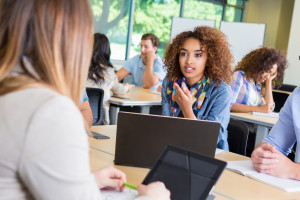
In the latest Research Matters column in Educational Leadership , McREL President and CEO Bryan Goodwin looks at what critical thinking really is and how it can best be taught. Its complexity—a mixture of dispositions and skills including valuing inquisitiveness and other points of view, using logical reasoning to support arguments, and examining our own beliefs and changing them based on new data—may explain why schools, and even colleges, often do little to develop it.
However, Goodwin says, research shows it can be learned, using two key approaches. First, critical thinking skills should be taught directly. Marin and Halpern (2011) showed that students in low-performing high schools who received explicit instruction in such skills (how to develop arguments, parse correlation from causation, identify stereotypes and mental models, and predict long-term consequences of decisions) demonstrated significant gains in critical thinking, while students who took a course in which critical thinking skills were embedded but not taught directly showed no gains. Second, critical thinking should be explicit but not taught in a vacuum. Abrami et al. (2015) found three elements needed to be in place: classroom dialogue and discussion; complex problem solving; and mentoring.
Goodwin concludes that perhaps the best approach, then, is to help students develop critical thinking skills through explicit instruction that is interwoven into course content, not as a standalone endeavor. This approach, combined with simple strategies such as asking students to support every answer they give with the word because , may be the best deterrent to fake news we can offer.
Read the entire column .
Posted by McREL International.
About McREL.org
McREL is a non-profit, non-partisan education research and development organization that since 1966 has turned knowledge about what works in education into practical, effective guidance and training for teachers and education leaders across the U.S. and around the world.
Previous Post Supporting students’ growth mindset and effort
Next post white paper | let’s rethink online learning (2017), leave a reply.
Save my name, email, and website in this browser for the next time I comment.
- McREL CATALOG
- ABOUT McREL
- Who We Are—McREL Staff
- McREL Catalog
- School & System Improvement
- Balanced Leadership
- Classroom Instruction That Works
- Curiosity Works
- Curriculum & Standards
- Personnel Evaluation
- Power Walkthrough
- Student Learning That Sticks
- Research Partnerships
- Research Reports
- White Papers
- Ed-Tech Evaluation
- PD Courses & Events
- FREE RESOURCES
- Subscribe to Free Resources
- Client-Partner Spotlights
- Compendium of Standards
Search McREL.org
© 2024 McREL International. @2023 Mcrel International | Powered by NEWMEDIA
- About McREL
- Equal Employment Opportunity
- Learning That Sticks
- Multilingual and English Learners
- Research & Evaluation
- Free Videos
- In-Person Events
- for Teachers
- for Principals
- Compendium of Academic Standards
- Papers and Reports
- REL Pacific
- CC Region 11
- CC Region 12
More From Forbes
How to maintain critical thinking in the modern world of new media.
- Share to Facebook
- Share to Twitter
- Share to Linkedin
Shutterstock
The phrase ‘fake news’ is becoming more and more common. Sometimes it’s used to describe false or exaggerated stories published online and on television by organizations with questionable motives. On the other hand, it is also used to deflect from legitimate stories by politicians and others who want to paint any critical coverage as false.
Fake news isn’t a new phenomenon. Tabloids have been pushing false stories for decades. Newspapers and television news outlets have been guilty of showing their editorial bias a bit too much as well. The difference is that the 24 hour news cycle means there is an overwhelming amount of information out there and it never stops flowing. That makes it challenging to unpack what is real and what is not, especially as social media became the top news source for 62% of adults in the US .
According to the data from the 2018 Edelman Trust Barometer, 59% of respondents claimed to be unsure about the truthfulness of data they see in the media. What is more, almost two-thirds of the respondents indicated that the average person cannot tell good reporting from a rumor or fake story.
So who’s being duped by this fake news? One might think it’s the less technical savvy Boomers who fall for this. That’s not completely inaccurate. They, like any other group, do fall prey to this. However, millennials are just as likely to believe false news stories. Worse, millennials are known to spread the news by liking and sharing.
The question is, how do you maintain the ability to think critically and determine which stories are real and which are fake? Here are a few tips for properly analyzing news and sources online.
1. Check credentials
One sign that the story you are reading or watching is valid is that the author’s or journalist’s credentials are clear. You should easily be able to tell who is presenting the story, what organization they represent, and how they are qualified. You should also be able to back track from the link to a reputable home page.
If you can determine that the person is a truly qualified, subject-matter expert, then the story may likely be accurate. On the other hand, if they are simply a blogger with a goal of forwarding a particular narrative or agenda, your skepticism is warranted. By checking credentials you will quickly learn to identify legitimate news organizations and ones that are not. Finally, be aware of satire sites that post ridiculous news stories for entertainment.
2. Verify sources
Never take a news story or blog post at face value. It’s important to determine where people are getting their information. People who are interested in posting accurate information online or elsewhere will link to their information sources, especially when citing some numbers or facts. Check those out. If they use the following you can likely trust them:
- Studies from reputable colleges and universities, or government agencies.
- Stories posted in legitimate newspapers, journals, and other publications.
- Quotes and commentary from qualified professionals.
- Verified information from eye witnesses.
Be wary of the following:
- Stories that don’t link to any sources.
- Bloggers who link their previous posts as ‘evidence’.
- Links to sponsored studies.
- Use of ‘experts’ who are in no way qualified to speak on a topic.
- Links to spoofed websites such as ABC.com.co (Not the same as ABC.COM).
3. Sharpen your critical thinking skills
One significant issue is that it is easy to become intellectually lazy in the face of all of this information being spoon fed to us. Don’t become a passive consumer of news and other data. Instead, make an effort to keep your critical thinking skills sharp. Always challenge your own assumptions and biases. Use a combination of your own experience as well as data that has proven to be true through solid testing procedures to validate ideas and opinions .
4. Read beyond the headlines
This happens all too often, and the truth is most are guilty of doing this at least on occasion. You’re scrolling through Facebook, and you see that your friend has shared a news story claiming that NASA is spending millions of taxpayer dollars conducting seemingly ridiculous experiments in space. The post has received several angry reactions and the torches and pitchforks are out in full force in the comments section.
You trust your friend and know they are an intelligent person. You click share and add a bit of angry commentary. Other people then share your post.
What you didn’t do was read the story beyond the headline. It turns out that these seemingly ridiculous experiments actually have very important implications in the areas of medicine, climate science, and more. Sadly sharing news stories without reading them is all too common .
5. Use fact checkers
There’s no way to personally verify every bit of information that you come across. However, if you read or watch something that you believe is designed to create an emotional response, makes alarming claims, or simply cannot be easily verified, use a reputable fact checker. These include Snopes, Politifact, Washington Post’s fact checker, FactCheck.org, and OpenSecrets. If you’re resident or currently in a country or region where some of these resources are blocked or access to them is restricted in some other ways, use a reliable virtual private network (VPN) which helps you bypass the limitation and stay safe.
Be diligent in ensuring that the information you use to form opinions is accurate and reputable. Verify stories before passing them along. Be wary of always believing things simply because they fit neatly into your world view. The world needs critical thinkers who stop fake news in its tracks.
- Editorial Standards
- Reprints & Permissions

20 Questions To Help Students Think Critically About News
Misleading info is often based on partial truths & reframed to fit a purpose. Here are questions to help students think critically about news.
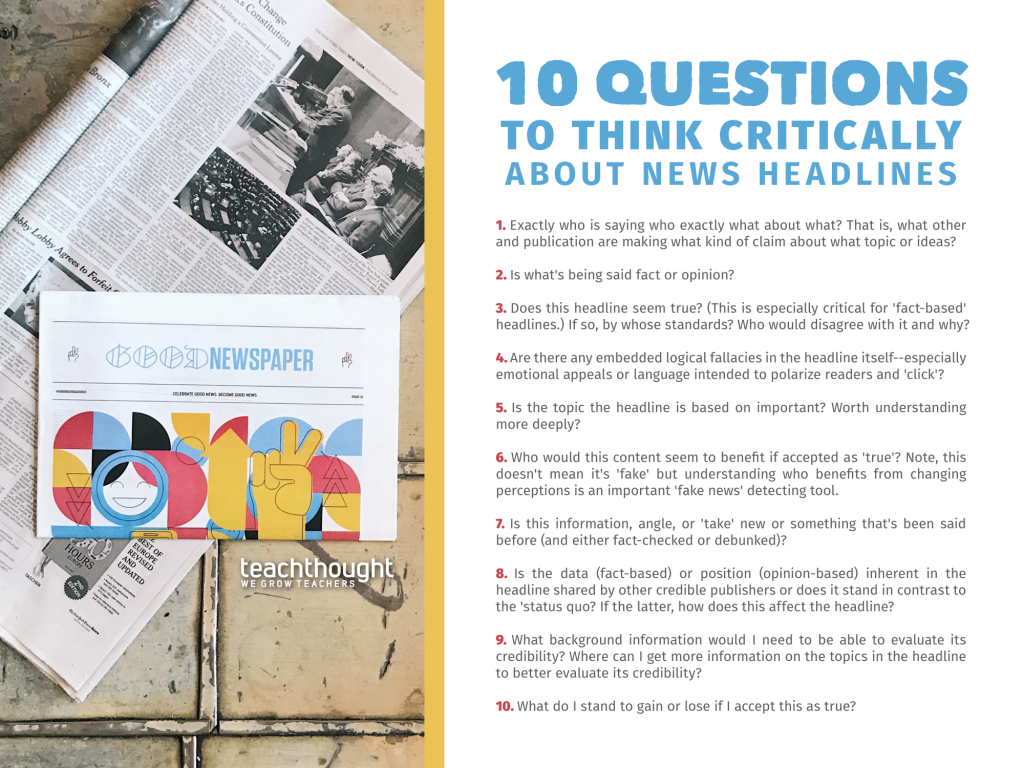
Help Students Think Critically About News With These 20 Questions
by Terry Heick
1. In the article, headline, or social share, ‘who’ is saying ‘what’? That is, what specific author and publication are making what kind of claim about what topic or ideas?
2. Is what’s being said fact or opinion?
3. Does this headline seem true? (This is especially critical for ‘fact-based’ headlines.) If so, by whose standards? Who would disagree with it and why? How can it be fact-checked? Is the author using ‘grey areas’ of ‘truth’ in a way that seems designed to cause a stir, cast doubt, influence thinking, or otherwise change the opinion of readers?
4. Is this headline entirely ‘true’/accurate or based instead on partially true information/data? Misleading information is often based on partial truths and then reframed to fit a particular purpose: to cause an emotion such as anger or fear that leads to an outcome of some kind: a ‘like,’ donation, purchase, signup, vote, etc.
5. Are there any embedded logical fallacies in the headline itself–especially straw man arguments, emotional appeals, or charged language intended to polarize, rally, or otherwise ‘engage’ readers?
6. Is the topic the headline is based on important? Worth understanding more deeply?
7. Who would this seem to benefit if accepted as ‘true’? Note, this doesn’t mean it’s ‘fake,’ but understanding who benefits from changing perceptions is an important ‘fake news’ detecting tool.
8. Is this information, angle, or ‘take’ new or something that’s been said before (and either fact-checked or debunked)?
9. Is the data (fact-based) or position (opinion-based) inherent in the headline shared by other credible publishers or does it stand in contrast to the ‘status quo’? If the latter, how does this affect the headline?
10. What background information would I need to be able to evaluate its credibility? Where can I get more information on the topics in the headline to better evaluate its credibility? What do I stand to gain or lose if I accept this as true?
11. Does the ‘news story’ accurately here represent the ‘big picture’ or is it something ‘cherry-picked’(in or out of context) designed to cause an emotional response in the reader?
For the second set of questions to think critically about news headlines, we’re turning to the News Literacy Project , a media standards project that created a set of questions to help students think critically about news headlines.
12. Gauge your emotional reaction. Is it strong? Are you angry? Are you intensely hoping that the information turns out to be true or false?
13. Reflect on how you encountered this. Was it promoted on a website? Did it show up in a social media feed? Was it sent to you by someone you know?
14. Consider the headline or message:
a. Does it use excessive punctuation or ALL CAPS for emphasis?
b. Does it make a claim about containing a secret or telling you something that ‘the media’ doesn’t want you to know?
c. Don’t stop at the headline. Keep exploring!
15. Is this information designed for easy sharing, like a meme?
16. Consider the source of information:
a. Is it a well-known source?
b. Is there a byline (an author’s name) attached to this piece?
c. Go to the website’s ‘About’ section. Does the site describe itself as a ‘fantasy news’ or ‘satirical news’ site?
17. Does the example you’re evaluating have a date on it?
18. Does the example cite a variety of sources, including official and expert sources? Does the information this example provides appear in reports from (other) news outlets?
19. Does the example hyperlink to other quality sources?
20. Can you confirm, using a reverse image search, that any images in your example are authentic (i.e., haven’t been altered or taken from another context)?
21. If you searched for this example on a fact-checking site such as snopes.com, factcheck.org, or politifact.com, is there a fact-check that labels it as less than true?
- It is easy to clone an existing website and create fake tweets to fool people
- Bots are extremely active on social media and are designed to dominate conversations and spread propaganda.
- Fake news and other misinformation often use a real image from an unrelated event.
- Debunk examples of misinformation whenever you see them. It’s good for democracy!
You can download the full ‘checkology’ pdf here and find more resources at checkology.org
TeachThought is an organization dedicated to innovation in education through the growth of outstanding teachers.

5 Ways to Teach Critical Thinking in Media Literacy to Fight Fake News
Media Literacy And Critical Thinking Can Defeat Fake News
The term fake news has come to prominence recently, referring to everything from sensationalist internet clickbait stories designed to generate advertising revenue to politically motivated propaganda masquerading as news.
Often, sophisticated satire and parodies are interpreted as serious stories and are shared on social media as if they were factual.
While there is no doubt that news has benefited from the instant access of the information age with such phenomena as citizen journalism and 24-hour reporting, some significant challenges also arise that make it more necessary than ever to inculcate critical thinking skills in our students.
AI has accelerated the spread of fake news by automating content creation, amplifying dissemination through social media algorithms, and creating convincing deepfake videos, undermining trust in information sources.
In this article, we will explore how to use critical thinking skills to boost media literacy in the fight against misinformation and fake news.
What Are Critical Thinking Skills?
Critical thinking generally refers to the ability to think clearly and rationally about something. It is a necessary process for formulating an informed, independent opinion.
Critical thinkers are adept at identifying biases, fallacies, and inconsistencies in arguments. They employ evidence-based reasoning to form well-founded judgments. Moreover, critical thinking involves adapting viewpoints to new evidence or alternative interpretations.
We can commonly acknowledge five elements of Critical Thinking, and these are:
Without critical thinking skills, students won’t get beyond memorising and regurgitating facts and figures and will be incapable of independent thought, leaving them vulnerable to manipulation by misinformation and lies.
Critical thinking skills require students to analyze, evaluate, interpret and synthesize information. Practising these complex processes in the classroom enables students to apply their own creativity to problem-solving and conclusion formation.
A Complete Teaching Unit on Fake News

Digital and social media have completely redefined the media landscape, making it difficult for students to identify FACTS AND OPINIONS covering:
Teach them to FIGHT FAKE NEWS with this COMPLETE 42 PAGE UNIT. No preparation is required,
Activity 1: The Pro / Pro Chart Lesson
Often, during the prewriting of an argumentative essay , we teach our students to weigh up the pros and cons of the various arguments. The Pro / Pro Chart is a twist on this familiar process that encourages flexibility in our students’ thinking.
However, instead of choosing between the two opposing poles, this approach encourages students to identify the positive aspects of the differing viewpoints before merging these positive qualities into a third option containing the positive aspects of both.
Rather than focusing on the weaknesses of an opposing point of view, say, as in a traditional debate , the Pro / Pro approach challenges students to dig down into the opposing viewpoint to find its merits.
This can be undertaken as a whole-class activity. Start by choosing what seems like a bad idea, such as a restaurant without seats or a roof. Have students brainstorm how this could be a positive.
You may be surprised at some of the creative ideas you get back, such as faster turnover of customers, serving those in a hurry, starry views at night, etc.
This activity teaches students the importance of not dismissing ideas out of hand without close examination. The tendency to disregard things that do not fit our expectations is very strong. This activity shows students that on closer examination we can often find merit in even the most ostensibly worthless of ideas.
Activity 2. Playing Devil’s Advocate Lesson
Like the activity above, Playing Devil’s Advocate allows students to see things from other perspectives. It involves students role-playing a point of view they oppose.
To start this activity off list a few controversial statements on the whiteboard suitable for your age group and demographic. Instruct the class to divide according to how they feel about the statement.
Those who are ‘for’ the statement go to one side of the room, and those against go to the other. Then, inform students that they will have 10 minutes to prepare arguments supporting the opposing view to the one they have expressed.
Students can either do this individually or collaborate in groups. This activity can also serve as a valuable preparation for a later formal debate.
Activity 3. The Five Whys Lesson
This straightforward activity is a super way to get students to think deeper and really drill down to the root of a problem. It can be used with a broad range of problems and involves asking “why?” – repeatedly! Think of the annoying younger sibling constantly inquiring, “But, whyyyyyy!!”
The Five Whys is best illustrated by an example initially developed by the Toyota Motor Corporation to identify problems in production systems.
First, think of a simple problem to investigate as a group. The Five Whys will help you drill down to the root cause of the problem and suggest a solution by working back to the cause through a series of effects.
For example,
Problem: Tony is always tired at school.
Reason: Because he doesn’t get enough sleep.
Reason: He goes to bed too late in the evening.
Reason: He doesn’t finish his homework until 11 pm.
Reason: He doesn’t start it until 10 pm.
Reason: He watches TV all evening.
Solution: Tony should do homework before watching television.
This process can be applied to a wide variety of practical or intellectual problems. The number of ‘whys’ is not fixed at 5 either. The question can be repeated and explored as often as needed to get to the root cause of the problem and until a viable solution becomes apparent.
Activity 4. Desert Island Decisions Lesson

This group activity engages the students’ critical thinking faculties and problem-solving abilities.
It is based on the survival scenario of being marooned on a desert island after a shipwreck. The group can choose 5 items to salvage from the wreckage to help them survive or secure their rescue. The number of items can be modified depending on time availability and group ability.
Students must discuss the relative merit of the different items suggested and negotiate with each other to reduce the list to the set number of items. Some hard decisions are required, and this can often lead to very engaged and lively debates.
At the end of the activity period, the group can present their list to the class and compare their decisions with the decisions made by the other groups.
This activity lends itself to easy differentiation, too. You can ask groups to list a certain number of items and rank them in terms of importance. You can also change the environment, which will throw up many new problems, for example, a plane crash in a tropical jungle.
Activity 5: Picture the Scene Lesson
Text is not the only means of communicating information, so it is important students develop the ability to apply their critical faculties to interpreting imagery, too.
In this activity, students view a photograph or picture projected on the whiteboard at the front of the room. They are then given a worksheet with the question “ What is happening in this image? ” written at the top.
After viewing the image closely for a few minutes, students answer this question in a sentence or two, outlining what they believe to be happening.
In the next stage, the students answer, “ What led you to your conclusion ?” Instruct them to write down the steps that led them to form their opinion. They must list all the evidence from the image that led them to their conclusion.
This activity helps students to think clearly about the steps they follow in forming their opinions. It encourages them to think about their own visceral responses to images by asking them to verbalize those responses.
It also reinforces the importance of basing opinions on evidence. This activity is easy to modify for different age and ability groups by choosing the image judiciously.
Media Literacy, Critical Thinking and Digital Citizenship for Students
Media literacy and critical thinking skills are crucial components of digital citizenship education, as they empower students to navigate the complexities of the digital world responsibly and ethically. In today’s interconnected society, where information flows freely across various online platforms, critically evaluating media content is essential for students to engage as informed and active participants in the digital realm.
Media literacy education equips students with the knowledge and skills to assess the credibility and reliability of online information. By teaching students how to analyze media messages, identify biases, and evaluate sources, media literacy education enables them to distinguish between fact and opinion, truth and misinformation. This skill is particularly important in an era where fake news and online hoaxes abound, as it helps students develop a healthy scepticism towards online content and encourages them to seek out reliable sources of information.
Moreover, critical thinking plays a fundamental role in digital citizenship education by fostering a mindset of inquiry and reflection. Critical thinkers do not passively accept information at face value; instead, they engage in analytical reasoning, questioning assumptions, and evaluating evidence before forming opinions or making decisions. By cultivating critical thinking skills, educators empower students to approach digital media with discernment and intellectual rigour, enabling them to engage with online content more thoughtfully and responsibly.
Furthermore, media literacy and critical thinking skills are essential for promoting digital citizenship values such as respect, empathy, and ethical behaviour online. Media literacy education helps students recognize and challenge stereotypes, misinformation, and hate speech in digital media, fostering a more inclusive and respectful online community. Likewise, critical thinking encourages students to consider the consequences of their online actions and to engage in constructive dialogue with others, promoting positive digital interactions and responsible digital citizenship.
In conclusion, media literacy and critical thinking skills are indispensable tools for preparing students to navigate the digital world with confidence, integrity, and empathy. By equipping students with these essential skills, educators empower them to become active and ethical participants in the digital age, contributing to a more informed, engaged, and responsible society.
How Critical Are Critical Thinking Skills?
The importance of thinking critically is widely recognized in many curricula. It is, for example, given a position of central importance in the Common Core Standards and is represented as the compulsory subject Theory of Knowledge in the IB curriculum. It is also a part of the national curriculums of the English-speaking world.
To move beyond the mere memorization of facts, students must possess the ability to critically assess the information they are exposed to, not only to be adequately prepared for university but also for life beyond academia.
With the rapid pace of change in this technological age, it is essential that students develop skills that allow them to adapt to working environments creatively; the shape of which we can’t predict.
Bringing critical thinking to the classroom helps students achieve all of this. Not to mention it’s a lot of fun besides!
OTHER GREAT ARTICLES RELATED TO CRITICAL THINKING SKILLS

6 Ways To Identify Fake News: A Complete Guide for Educators


Top 7 Reading Comprehension Strategies for Students and Teachers
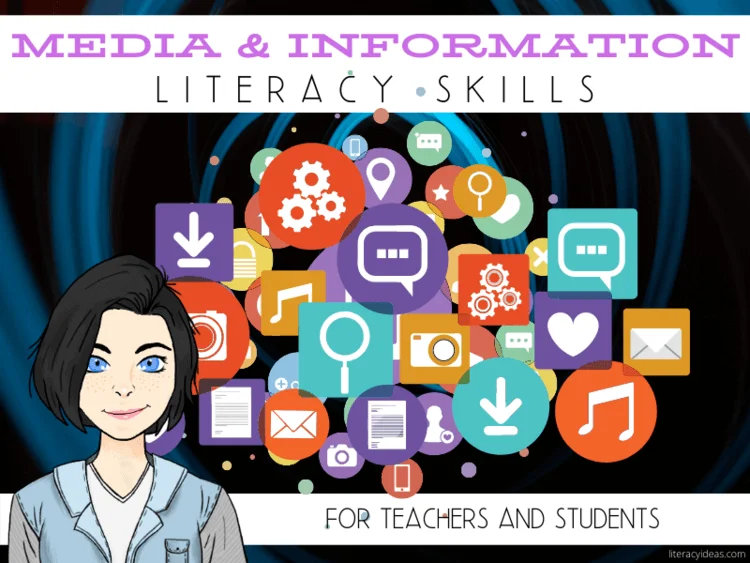
Information Literacy and Media Literacy for Students and Teachers

Top Research strategies for Students

Teaching Students about Fake News in the Real World
The news and critical thinking: Why is it important?
Every day, we’re bombarded with a huge amount of news and information from all around the world. Whether it’s through websites, social media or TV, it’s never been easier to access the news.
Think about how many bits of news you’ve seen on your social feeds today. Do you know how much of it you can really trust?

What is media literacy and why is it important?
Media literacy is the ability to spot different types of media and to understand the messages they are communicating. It involves questioning what you’re watching, listening to or reading, so that you can make better judgements about the messages you’re being presented with.
Media includes all the different ways a message is communicated – from the news we read online to the ads we see on TV. The media we consume can inform, educate, entertain or convince us. It influences the way we see and think about ourselves and the world around us.
If we have good media literacy, it can stop us from getting stressed out by the confusing or negative things we see in the media. It can also help us focus on all the useful media that helps us to learn, connect and relax.
How can I improve my media literacy?
Question the credibility of the news source.

Whether you read the news from social media or a website, it’s important to know who is publishing the content. A credible or trustworthy news provider will make sure their reporting is impartial and free of errors.
Check out a news provider’s ‘About Us’ section on their website to learn more about their mission, values and approach to reporting. For example, as a not-for-profit, The Conversation ’s mission is ‘to provide access to quality explanatory journalism’ through articles written by ‘academics and journalists working together’. Factors like these will influence the way a story is reported.
Also consider who owns the media company, and if that is impacting the stories being produced. In Australia many publications share a parent company, meaning they may look and feel different, but they’re bound to similar publishing guidelines and rules. Check out a high level overview of Australian media organisations here .
Find news from a variety of sources

Get a balanced picture of news stories by consuming different news sources. This will give you a range of different perspectives on an issue. Media sites are often funded by advertisers, which means their reporting is driven by clicks (how people engage with the content). This causes them to report their stories in certain ways. If a news site is funded by an organisation with a particular political view, it can lead to reporting that promotes their way of thinking.
Read a mix of local publications and international news providers such as Reuters . This will help you to develop a well-informed opinion on a story.
Think about the purpose of the article
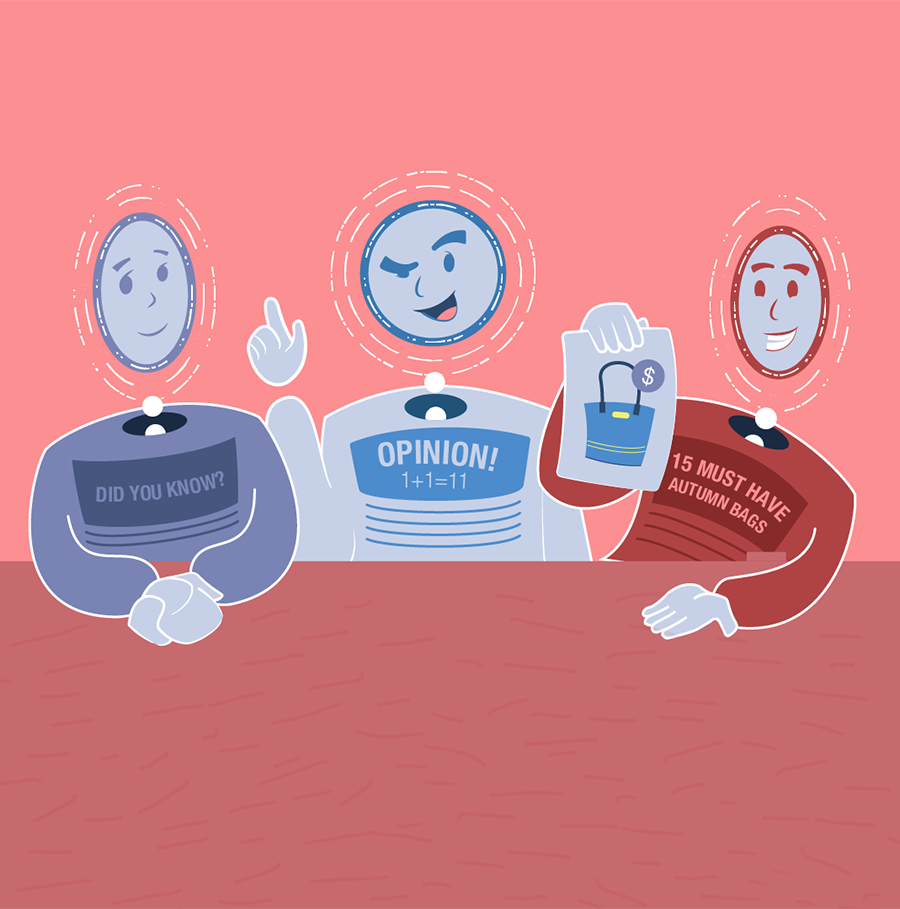
Why was the story produced? Was it to:
inform you about something that happened (news report)?
change your mind or behaviour (opinion piece)?
sell you something and promote a brand (branded content)?
A news provider might produce many different types of articles and videos, and should label them to make their purpose clear to the reader.
When it comes to the news, start with reports that contain facts, statistics from a trustworthy source (like from the government or an academic institution) and quotes from experts. Once you have the background details on a story, you’ll be able to make your own conclusions about an opinion piece written in response to it. This is especially important because prejudice against a person or group is common in mainstream media coverage.
Spot misinformation or fake news
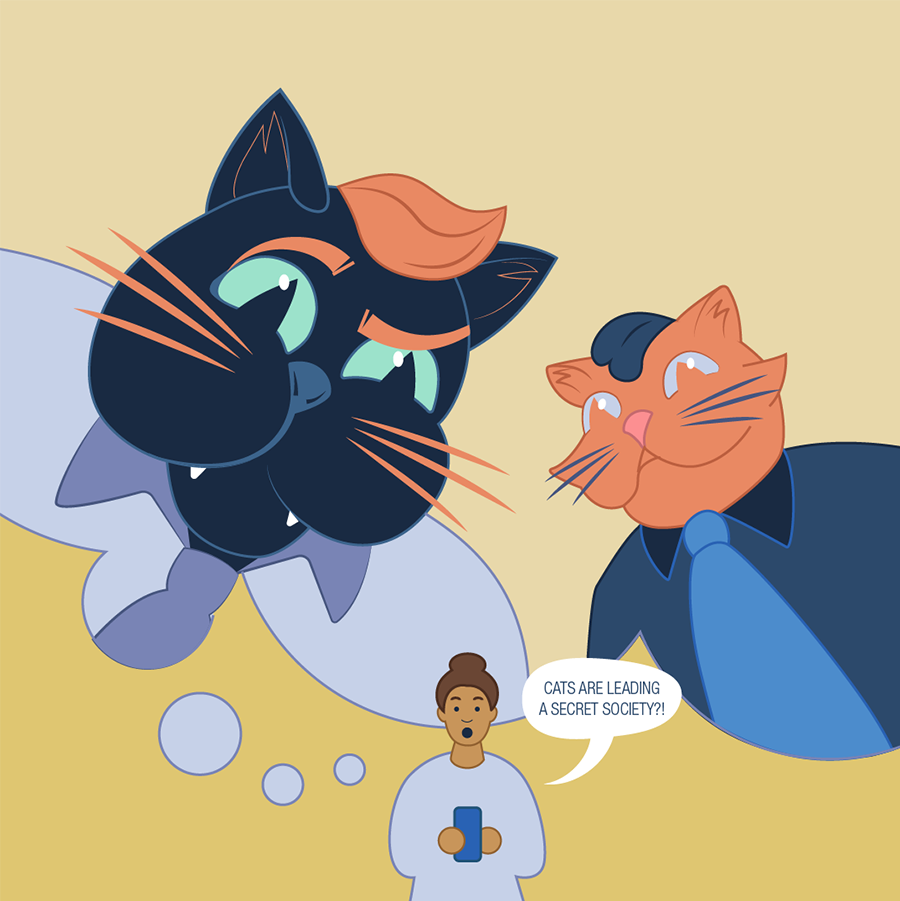
Although social media has helped us become better connected, it has also driven the viral spread of fake news, or ‘misinformation’. Fake news is created using false or inaccurate information, with the intention of deceiving the reader. It works by grabbing a reader’s attention with a sensational or wild claim in the hope they’ll then click through and share it.
Social media feeds are based on an algorithm or system of rules that sorts posts based on the type of content you normally interact with and how popular the content is. The more people who interact with the content, the quicker the fake news spreads and the more money the site makes from advertisers who pay to put up their ads on the site. Here are a few signs the story you’re reading could be fake news:
No evidence: It contains no evidence for its claims and is often based on one person’s side of the story.
Sensational headline and images: It uses an outrageous headline and images to lure you in (e.g. ‘Celebrity kills off dad in latest prank’). The stories may also include many bizarre claims.
Not reported anywhere else: If you can’t find the story through any other news source, it’s reasonable to question its credibility.
Contains errors: The article contains spelling and grammatical mistakes or incorrect dates.
Unusual URL: For example, the site URL ends in “.com.co” or “.lo”.
Talk to your family and friends about the news you’re reading

Discussing news stories with other people will challenge and broaden your own perspective. Be open to talking with and listening to people whose views differ from yours.
If the conversation starts to become difficult or makes you feel uncomfortable, ask someone neutral to join the discussion. Or you can always stop the conversation and simply agree to disagree. There’s no point arguing with someone who doesn’t want to listen to anyone else’s perspective. Get some tips on discussing politics with family and friends .
Switch off and take a break
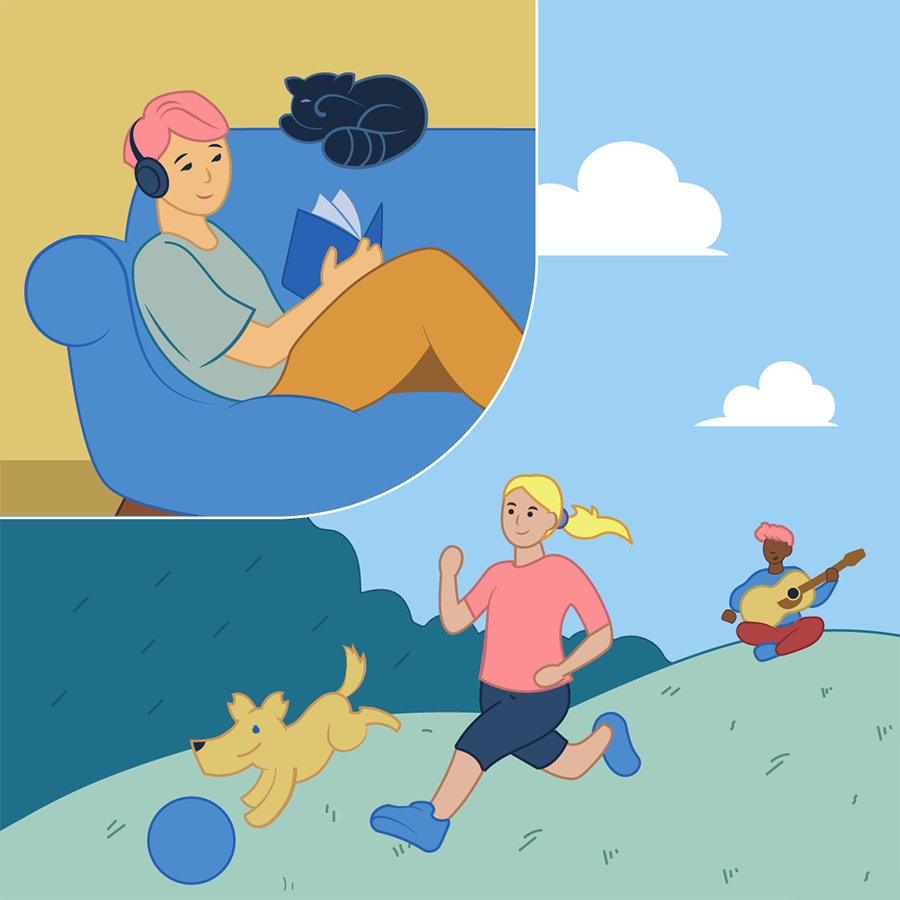
News has a 24-hour cycle – its output is never-ending. It can therefore be overwhelming and exhausting, especially as some media outlets tend to report mostly negative stories (because they get an emotional reaction). Get some tips on coping with disturbing videos and images here .
Turn off the news and do something you enjoy to clear your mind . Challenge yourself to a tech-free hour and spend it going for a walk or reading a book. You could do something that will refresh your mind and body, like shooting some hoops or dancing to your favourite music.
Whatever you decide to do, remember that it’s important to take a break from the news every once in a while. Taking time out helps you to think critically about and not be overwhelmed by the news. It’ll also help you with all the other tips in this article!
What can I do now?
Learn how to spot fake news by playing Bad News Game , a quick online game where you try to build a fake news empire.
Watch the CrashCourse series on media literacy for a deeper dive into the topic.
Get some tips on dealing with bad world news.
Common Sense Media
Movie & TV reviews for parents
- For Parents
- For Educators
- Our Work and Impact
Or browse by category:
- Get the app
- Movie Reviews
- Best Movie Lists
- Best Movies on Netflix, Disney+, and More
Common Sense Selections for Movies

50 Modern Movies All Kids Should Watch Before They're 12

- Best TV Lists
- Best TV Shows on Netflix, Disney+, and More
- Common Sense Selections for TV
- Video Reviews of TV Shows

Best Kids' Shows on Disney+

Best Kids' TV Shows on Netflix
- Book Reviews
- Best Book Lists
- Common Sense Selections for Books

8 Tips for Getting Kids Hooked on Books

50 Books All Kids Should Read Before They're 12
- Game Reviews
- Best Game Lists
Common Sense Selections for Games
- Video Reviews of Games

Nintendo Switch Games for Family Fun

- Podcast Reviews
- Best Podcast Lists
Common Sense Selections for Podcasts

Parents' Guide to Podcasts

- App Reviews
- Best App Lists

Social Networking for Teens

Gun-Free Action Game Apps

Reviews for AI Apps and Tools
- YouTube Channel Reviews
- YouTube Kids Channels by Topic

Parents' Ultimate Guide to YouTube Kids

YouTube Kids Channels for Gamers
- Preschoolers (2-4)
- Little Kids (5-7)
- Big Kids (8-9)
- Pre-Teens (10-12)
- Teens (13+)
- Screen Time
- Social Media
- Online Safety
- Identity and Community

How to Help Kids Spot Misinformation and Disinformation
- Family Tech Planners
- Digital Skills
- All Articles
- Latino Culture
- Black Voices
- Asian Stories
- Native Narratives
- LGBTQ+ Pride
- Best of Diverse Representation List

Multicultural Books

YouTube Channels with Diverse Representations

Podcasts with Diverse Characters and Stories

A lot of news media and social media content is designed to grab our attention and keep us engaged. And whether we're getting our news from a TV network, TikTok, or YouTube, it can be hard to tell what's accurate these days. Knowing that the news we consume can be biased, misreported, or even fake, it's crucial that all of us—especially young people—learn to decode the information we encounter.
As kids get older, parents and caregivers can help them become better critical thinkers. Teach your child to ask these questions when they come across news coverage from any source:
- Who made this content? What's their possible motivation for creating it?
- Does the news outlet or content creator seem trustworthy? Why, or why not?
- Who is the audience for this message?
- Is this actual news or an ad? How can you tell?
- Who might benefit or be harmed by this message?
Then, help your kid identify misinformation and disinformation using these tips:
- Be wary of accounts that don't have a lot of followers or aren't verified on social media platforms like TikTok and Instagram. This is a good indication to do more research on them before trusting what they say.
- Even when a channel or an account appears to be verified, they could still post clickbait. That's content designed to influence you to visit a page, video, or image online. Use these tips to identify clickbait .
- Make sure headlines and captions match the content, and always read or view the full post before sharing. It's not a good idea to believe or spread information based on just the headline.
- Look for signs of low-quality content. Examples include headlines and captions with grammatical errors, bold claims that aren't backed up by solid sources, overly edited videos, and sensationalist images.
- Check whether other credible outlets are reporting the same news. If not, that doesn't necessarily mean the news is untrue, but it does mean you should dig deeper. Also check the date a story or video was posted to make sure you're getting the most recent information.
- Use Snopes or FactCheck.org to verify news that seems highly unlikely before trusting or sharing it. This can also help you separate fact from opinion.
- Trust your gut. Misinformation and disinformation are created to get extreme reactions out of people. If what you're seeing or reading makes you feel strong emotions, it could be a sign that something isn't right.
- Brush up on your media literacy skills and learn how to better spot misinformation and disinformation with games like Get Bad News and Spot the Troll .
Finally, remind your kid that we all make mistakes when it comes to identifying misinformation. But being aware that they could (and probably will) come across inaccurate content online, and practicing the skills to identify it can go a long way to recognizing reliable information.
Raisa is passionate about helping kids thrive, which has led to her making a career out of reading and watching children's media. As a content editor at Common Sense, she works on tips and advice for families on managing entertainment and tech at home. She has previously worked in children's publishing and at nonprofit organizations. Raisa holds a bachelor's degree in Global Business and Marketing from Fordham University. She loves to read, travel, and watch football (aka soccer). You can find her exploring New York City during her free time, and trying to hunt down the best dumplings in the city (she has a never-ending list).
Recommended reads on this topic

Helping Kids Navigate the World of Artificial Intelligence
Ways to explore the latest tech with children and guide them to use new tools responsibly.

How Do I Teach My Kid About Clickbait?

Teaching Kids to Protect Their Data and Privacy Online
Tips for kids and teens to keep their information safe and private when they use tech.
Articles on Critical thinking
Displaying 1 - 20 of 83 articles.

Academic literacy is more than language, it’s about critical thinking and analysis: universities should do more to teach these skills
Pineteh Angu , University of Pretoria

Will New Zealand’s school phone ban work? Let’s see what it does for students’ curiosity
Patrick Usmar , Auckland University of Technology

‘What is a fact?’ A humanities class prepares STEM students to be better scientists
Timothy Morton , Rice University

NZ education scores must improve – but another polarising ideological pivot isn’t the answer
Bronwyn E Wood , Te Herenga Waka — Victoria University of Wellington and Taylor Hughson , University of Cambridge

The hidden risk of letting AI decide – losing the skills to choose for ourselves
Joe Árvai , USC Dornsife College of Letters, Arts and Sciences

Conspiracy theorists seem to favour an intuitive thinking style – here’s why that’s important
Darel Cookson , Nottingham Trent University

Is it OK to let my kids watch the same show over and over again?
Laura Scholes , Australian Catholic University

War in Gaza: An ethicist explains why you shouldn’t turn to social media for information about the conflict or to do something about it
Nir Eisikovits , UMass Boston

Colonialism shaped modern universities in Africa – how they can become truly African
Saleem Badat , University of the Free State

Teachers can nurture students who care about the world: four approaches that would help them
Zayd Waghid , Cape Peninsula University of Technology
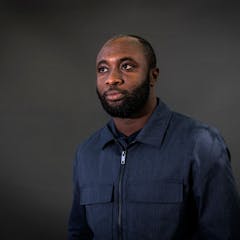
Tender Photo: the newsletter that’s creating a new conversation about African photography
Tinashe Mushakavanhu , University of Oxford
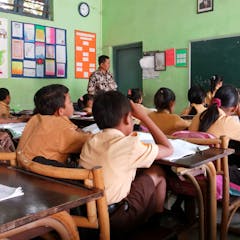
Old habits die hard: why teachers in Indonesia still struggle to teach critical thinking
Maya Defianty , Universitas Islam Negeri Syarif Hidayatullah Jakarta and Kate Wilson , University of Canberra
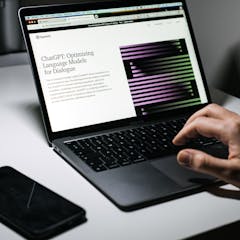
ChatGPT killed the student essay? Philosophers call bullshit
Dylan J. White , University of Guelph and Joshua August (Gus) Skorburg , University of Guelph
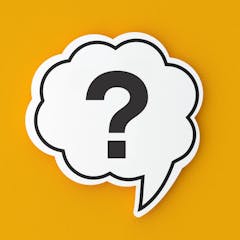
Debate: ChatGPT reminds us why good questions matter
Stefaan G. Verhulst , New York University

I introduced social entrepreneurship to my trainee teachers – why it’ll make them better at their jobs

How can you tell if something is true? Here are 3 questions to ask yourself about what you see, hear and read
Bob Britten , West Virginia University

Is the Easter bunny real? How to answer, according to a psychologist
Elizabeth Westrupp , Deakin University

Humanities are essential in understanding the Russian war against Ukraine
Kyle Frackman , University of British Columbia
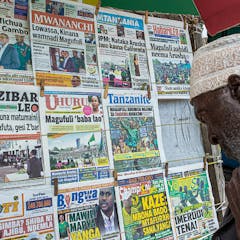
Journalism has changed. Education must reflect the reality
Franz Krüger , University of the Witwatersrand

Aaron Rodgers dropped the ball on critical thinking – with a little practice you can do better
Related topics.
- Artificial intelligence (AI)
- Climate change
- Conspiracy theories
- Critical thinking skills
- Higher education
- Misinformation
Top contributors
Senior Lecturer in Philosophy and Education; Curriculum Director, UQ Critical Thinking Project, The University of Queensland
Associate professor, Cape Peninsula University of Technology
Dana and David Dornsife Professor of Psychology and Director of the Wrigley Institute for Environment and Sustainability, USC Dornsife College of Letters, Arts and Sciences
Emeritus Professor of Education, University of Derby
Lecturer in Primary Mathematics Education, Deakin University
Professor, Faculty of Education and Arts, Australian Catholic University
Associate Professor of Philosophy, Deakin University
Senior Lecturer, Australian National Centre for the Public Awareness of Science, Australian National University
Senior Lecturer in Psychology, Nottingham Trent University
Associate Professor in Digital Media, Western Sydney University
Associate Professor in Interaction Design, Queensland University of Technology
Research fellow, University of York
Senior Lecturer in Science Education, Sussex School of Education and Social Work, University of Sussex
Associate Professor in Organisation Theory, Cambridge Judge Business School
Associate Professor in Higher Education, The University of Melbourne
- X (Twitter)
- Unfollow topic Follow topic
- Call for Volunteers!
- News & Announcements
- Newest Pages Added to CriticalThinking.Org
Translate this page from English...
*Machine translated pages not guaranteed for accuracy. Click Here for our professional translations.

News & Announcements
Announcements.
The Critical Thinking: Going Deeper Podcast Returns
After a brief hiatus, new episodes of Critical Thinking: Going Deeper are being published. Released today is episode 27, The Human Mind: Going Deeper - Thinking, Feeling, & Wanting .
The Foundation for Critical Thinking Is Seeking Volunteers!
We are seeking a programmer and a social media marketing expert for help with two ongoing projects:
1. Code management, repair, and feature development for our membership website, The Center for Critical Thinking Community Online . 2. Routinely sharing content and announcements with our social media followers in a professional manner.
See our full Call for Volunteers for details. Volunteers will receive free access to our learning opportunities and to the Center for Critical Thinking Community Online while working with us.
Online Certification Course Announced for Fall 2024 - June 3, 2024
Those looking to be certified in the Paul-Elder Approach to Critical Thinking can complete their certification training in the Fall 2024 Online Certification Course . Course meetings begin August 28th.
Certification Program Revised - June 3, 2024
We have made significant new revisions to our program for Certification in the Paul-Elder Approach to Critical Thinking . These changes help clarify benefits and obligations, and they describe which forms of certification are most appropriate depending on the applicant's purposes. Please see our White Paper at the above link for full details.
Special Conference Rates for Community Online Subscribers - May 14, 2024
Members of the Center for Critical Thinking Community Online receive 20% off the cost of registration for the entirely online 44th Annual International Conference on Critical Thinking .
If you are a member and would like this special rate, please email us today.
New Interview with Dr. Linda Elder - March 27, 2024
In this interview, Dr. Elder answers important questions about critical thinking, its history, its development in humans, and its applications in human life.
We thank Mr. Maciej Winiarek for his excellent questions! See the interview here .
Podcast Episodes Available on YouTube, Spotify, Etc. - March 27, 2024
Formerly available only to Community Online subscribers, earlier episodes of the Critical Thinking: Going Deeper podcast are now being released to the public.
- Listen on YouTube
- Listen on Spotify
- Listen on Apple
- Listen on Audible
- Listen on Amazon Music
Classic 1988 Richard Paul Audio Released - March 5, 2024
Richard Paul's classic keynote speech at the 8th Annual International Conference on Critical Thinking, in which he discusses education and critical thinking, has been released on YouTube. Listen here .
Validity Established for the Analysis Portion of the International Critical Thinking Essay Test - February 27, 2024
Peer-reviewed research published in Inquiry: Critical Thinking Across the Disciplines has validated the Analysis portion of the International Critical Thinking Essay Test . The research was spearheaded by social researcher Dr. Helena Hollis of Connected by Data, with contributions from Dr. Marina Rachitskiy of the University of Roehampton, Dr. Leslie Van Der Leer of Utrecht University, and our own Dr. Linda Elder.
Read More: https://doi.org/10.5840/inquiryct20241513
Registration Open for Fall 2024 Online Courses - February 6, 2024
Our online courses , CT700 and CT800, have been redesigned with new activities, new resources, and a new topic order. We are excited to deliver a more helpful, intuitive learning experience for our participants.
The Fall 2024 semester begins August 20th.
Registration Open for 44th Annual International Conference on Critical Thinking - January 22, 2024
The world's oldest critical thinking conference is now taking registrants for 2024 with the lowest prices in well over a decade!
The conference will be entirely online from July 21 - 26. Register here .
Online Courses Redesigned for Spring 2024 - January 9, 2024
The Spring 2024 semester begins January 23rd, but we are accepting new registrants through February 4th!
Certification Program Revised - November 14, 2023
We have extensively revised our program for Certification in the Paul-Elder Approach to Critical Thinking to reduce fees, add pathways to completing certification, and clarify benefits and obligations. See our White Paper at the above link for full details!
New Podcast Series! - September 18, 2023 Critical Thinking: Revealed
In the new Critical Thinking Revealed podcast, we interview those who have shown exceptional reasoning in a given area and explicate the examples of critical thinking therein.
Episode 1 has been posted on YouTube:
"Dr. Alex Hall, UCLA Professor of Atmospheric and Oceanic Sciences, UCLA - On the Climate Crisis"
Guest Presentation Program Posted for The 43rd Annual International Conference on Critical Thinking - June 12, 2023
Again this year, Guest Presenters from around the world will share their critical thinking ideas, experiences, and research at the world's longest-running critical thinking conference!
The full Guest Presentation program is online now. Some Guest Presenters will also lead live Q&A sessions, which are listed on the conference Daily Schedule .
The Critical Thinking: Going Deeper Podcast Reaches Its 20th Episode - June 6, 2023
In Critical Thinking: Going Deeper , Drs. Linda Elder and Gerald Nosich go beyond the fundamentals to explore deeper layers of critical thinking theory and how these more complex ideas can be applied to learning, teaching, work, and life. Today, the series released its 20th episode.
The full archive of the podcast is available exclusively to members of The Center for Critical Thinking Community Online!
New Research from Taiwan Utilizes Paul & Elder's Universal Intellectual Standards - March 29, 2023
New research from National Cheng Kung University's College of Medicine, published in BMC Medical Education, utilizes nine of the universal intellectual standards in assessing the reasoning of healthcare students. Researchers Yueh-Ren Ho, Bao-Yu Chen, and Chien-Ming Li have authored this paper, titled, "Thinking More Wisely: Using the Socratic Method to Develop Critical Thinking Skills Amongst Healthcare Students." Read the paper here .
Many Classic Articles Restored on CriticalThinking.Org - March 21, 2023
A number of article previews in our C riticalThinking.Org Library have been reverted to full articles, including the first nine articles under the "Fundamentals of Critical Thinking" section and the first 2-3 articles in all of the remaining sections.
All articles under the "About Critical Thinking" section continue to be offered in full, along with those mentioned above.
New Footage Appearing on YouTube Regularly - November 10, 2022
The Foundation for Critical Thinking YouTube channel is posting one or two new videos each week. Footage will include clips from the Critical Thinking: Going Deeper podcast , clips from our exclusive Community Online webinars , clips from conference sessions, and more!
Dr. Linda Elder Interview on The Propwatch Project with Serena Balani - July 14, 2022
Click here to view the interview on YouTube.
New Podcast with Drs. Linda Elder and Gerald Nosich in the Center for Critical Thinking Community Online - March 30, 2022
Join Drs. Linda Elder and Gerald Nosich for their new podcast, Critical Thinking: Going Deeper , as they uncover ever-deeper layers of critical thinking theory and explore how these insights can be applied to everyday work, life, learning, and teaching!
View episodes here - only in the Center for Critical Thinking Community Online!
Dr. Gerald Nosich Interview on the Controversy & Clarity podcast with Damien O'Connell - March 25, 2022
Click here to hear the interview on anchor.fm.
Fourth Edition Release of Critical Thinking: Tools for Taking Charge of Your Learning & Your Life - February 1, 2022
The latest edition of this seminal critical-thinking textbook, by Drs. Richard Paul and Linda Elder, is available now through Rowman & Littlefield. Electronic and print copies can be ordered here .
Dr. Linda Elder's Second Interview on the Beyond Perception podcast with Simon Rilling - March 5, 2022
Appreciation Video from Gladys Mangiduyos - December 2nd, 2021
An educator at Wesleyan University in the Philippines, Gladys Mangiduyos is a longtime member of the global critical thinking movement. She has been a champion for critical thinking at her institution for many years, and has created a new video expressing gratitude to critical thinking pedagogues who have helped advance ethical critical thinking in our world.
Watch a copy of the video here .
ThinkTech Hawaii's Interview with Dr. Brian Barnes: "Igniting Criticality and Creativity" - November 23, 2021
Click here to see the interview on YouTube.
Dr. Linda Elder Interview on the Beyond Perception podcast with Simon Rilling - November 9, 2021
Alison Morrow's Interview with Dr. Linda Elder - April 27, 2021
Forthcoming Book Announcement - January 21, 2021
Dr. Linda Elder is currently authoring a book with the working title, Critical Thinking Therapy . Release is expected in 2022. To read more on the topic of Critical Thinking Therapy, click here .
New Book Release by Dr. Gerald Nosich - January 15, 2021
Dr. Nosich's new book, Critical Writing: A Guide to Writing a Paper Using the Concepts and Processes of Critical Thinking , is available now in multiple formats. Orders can be placed with Rowman & Littlefield here .
New Publication Release - November 2020
Fact over Fake: A Critical Thinker's Guide to Media Bias and Political Propaganda is available now in multiple formats. Orders can be placed with Rowman & Littlefield here .
This title entails extensive revision and expansion of the classic Thinker's Guide to Media Bias & Propaganda , which Drs. Elder and Paul co-authored in 2008. This new reelase includes discussion of the many changes to news distribution over the last decade, including the rise of social media and growing influence of fake news and conspiracy theorists in the mainstream.
New Book Release by Dr. Linda Elder - December 2019
Dr. Elder's new book, Liberating the Mind: Overcoming Sociocentric Thought and Egocentric Tendencies , is available now in multiple formats. Orders can be placed with Rowman & Littlefield here .
Moneywise Guys Interview with Dr. Gerald Nosich - October 4, 2018
Click here to hear the hosts of the Moneywise Guys podcast interview Dr. Gerald Nosich.
Eighth Edition of The Miniature Guide to Critical Thinking: Concepts & Tools Released - September 2019
One of the most widely-distributed texts on critical thinking ever written , The Miniature Guide to Critical Thinking has roughly doubled its content in the 8th edition, but still provides a highly portable overview of critical thinking principles and theory. Digital and paper copies are available from Rowman & Littlefield here .
The Foundation for Critical Thinking Launches The Center for Critical Thinking Community Online - August 2019
The world's largest collection of critical thinking resources, activities, and discussion has just come online. The subscription-based Center for Critical Thinking Community Online features an enormous library of publications, videos, and exercises on critical thinking, as well as a social media component and opportunities to interact with our Fellows and Scholars not available anywhere else.
Join us today !
Michael Frank of Life Lessons Interviews Dr. Gerald Nosich - August 30, 2018
Click here for a transcript of Michael Frank's interview with Dr. Gerald Nosich.
Critical Thinking for Everyone 's Dr. Brian Barnes and Dr. Patty Payette Interview Dr. Gerald Nosich - August 9, 2018 on Forward Radio
Click here to hear Dr. Barnes and Dr. Payette of Critical Thinking for Everyone interview Dr. Gerald Nosich.
Critical Thinking for Everyone 's Dr. Brian Barnes and Dr. Patty Payette Interview Dr. Linda Elder - July 26, 2018 on Forward Radio
Click here to hear Dr. Barnes and Dr. Payette of Critical Thinking for Everyone interview Dr. Linda Elder.
Think Bigger Think Better 's Paul Gibbons Interviews Dr. Linda Elder - December 15, 2017
Click here to listen to Paul Gibbons' interview with Dr. Linda Elder.
Report to Congress on Critical Thinking & Child Education - July 4, 2015
Article by Dr. Linda Elder.
| |
"Essentials of Citizenship for a Complex, Interdependent World: Critical Thinking and Ethical Values" by Paula Fraser - September 23, 2013
In this editorial, Ms. Paula Frasier advocates for the Paul-Elder Framework for Critical Thinking in education.
Click here to read.
Entrepeneur Magazine Quotes Dr. Linda Elder in Article, "How to Improve Your Critical Thinking Skills and Make Better Business Decisions” - April 29, 2013
Click here to read the article.
"Achieving Critical Mass" - November 25, 2010
Article in Times Higher Education by Dr. Linda Elder.
Dr. Richard Paul on Mark Deo's Radio Show - September 17, 2010
Click here to listen. Skip to 22:46 for the interview.
Dr. Linda Elder Interview on The Secular Budhhist - August 2010
Click here to listen.
"Race to the Top of the Bottom: A Failure of Insight" - August 31, 2010
Editorial by Dr. Linda Elder.
"Reason to Live" - February 18, 2010
"I Think Critically, Therefore I Am" - August 6, 2009
Article in TImes Higher Education by Dr. Linder Elder.
"Are You a Critical Thinker?" - March 12, 2009
Article in The Christian Science Monitor by Dr. Linda Elder.
"Teaching Kids to Think Critically in the Age of Standardized Testing"
Interview with Dr. Linda Elder on West Marin Community Radio (KWMR).
"Re-Thinking the SAT: Rhetoric or Substance?" - October 2, 2002
Editorial by Dr. Richard Paul in Education Week .
An Interview with Linda Elder About Using Critical Thinking Concepts and Tools - April 2002
Interview by Michael F. Shaughnessy of Eastern New Mexico University.
An Interview with Linda Elder: About Critical Thinking and Gifted Education - 2002
Interview by Michael F. Shaughnessy of Eastern New Mexico University and Randy Seevers of the University of Houston,
"Collaborative Learning: Collaborative Mislearning" - March 19, 1997
Editorial by Dr. Linda Elder in Education Week .
"The New Standards: The Case for Intellectual Discipline in the Classroom" - March 11, 1997
Editorial by Dr. Linda Elder in the Community College Times .
"The Practical Impractical (K-12)" - May 29, 1996
Editorial by Dr. Richard Paul published in Education Week .
When to choose inquiry-based learning over direct instruction in STEM
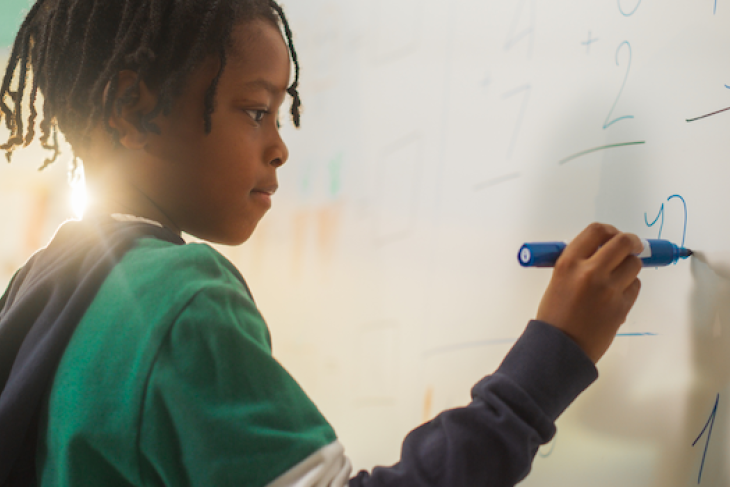
Inquiry-based learning in STEM classrooms, long a contentious topic, has been making news since the introduction of the controversial California Math Framework . This student-led approach aims to foster engagement by sparking curiosity and critical thinking. Rather than passively receiving knowledge from an instructor, students take an active role in their learning by searching for evidence, constructing arguments, and collaborating with peers.
So does it work? The short answer is yes, but only when done well and at the correct skill level.
Much of the recent criticism of inquiry-based learning (or at least the version of inquiry-based learning embraced by California) stems from its discouragement of rote memorization. That, in turn, could hinder students’ development of “math fact fluency,” or the ability to recall addition, subtraction, multiplication, and division facts flexibly and efficiently. My colleague Daniel Buck has pointed to seemingly problematic examples of students suggesting multiple ways to solve a multiplication problem. For example, to multiply 12 by 7 in an inquiry-based classroom, some students might add 12 seven times, while others take the sum of 10x7 and 2x7—whereas a student who has memorized their math facts can quickly and confidently recall “84!” without needing to engage in higher-order thinking.
So what’s more valuable: students creatively constructing a well-rounded picture of their math facts or the ability to recall facts quickly when needed?
Both my experience as a middle-school math interventionist and common sense suggest that this is a “both/and” situation. A student who has achieved true number sense should be able to recall the answer to 12x7 without hesitation and to deconstruct the problem in multiple ways.
But don’t just take my word for it. Study after study suggests a combination of automatic recall and critical thinking skills is necessary for developing a robust understanding of mathematics.
Still, grade level and other contextual factors matter when it comes to striking the right balance—and here, the California Framework goes astray. Plenty of research shows that early learners, especially those who are low-achieving , benefit from explicit instruction that is intended to build math fluency. To put it simply, students should absolutely memorize their math facts. Rote memorization and direct instruction are essential during the foundational stages of learning mathematics.
But once students have achieved math fact fluency, inquiry-based learning, done right, offers a pathway to much greater depth of understanding in math and science classrooms. In fact, a growing body of evidence suggests that students learn better with this approach, particularly in the later grades. For example, a 2008 study based in the Detroit Public Schools Community District showed that a new inquiry-based science curriculum in select seventh and eighth grade cohorts was associated with higher standardized achievement test gains on the Michigan Educational Assessment Program (MEAP) exams compared with the rest of the district.
Critics of inquiry-based learning often misunderstand the role of the teacher. Yes, students drive the discussion, but that does not mean they choose where the car is headed. For example, one effective technique is to use “ back-pocket questions ”—a series of scaffolded questions designed to match individual skill levels and promote productive struggle. During the lesson, the teacher circulates the room, assessing how close students are to finding the correct answer. For groups that are struggling, the teacher poses increasingly leading questions, thus allowing students to think independently while still getting to the right answer.
As this example suggests, inquiry-based instruction is an art rather than a science, and in practice, it requires immense preparation and skill on the part of the instructor. Thus, schools and districts adopting this approach should provide substantial professional development and coaching for teachers. Poor implementation can be detrimental, leaving students to struggle without adequate support.
When executed correctly, inquiry-based learning can significantly boost achievement , especially in later grades. But completely dismissing memorization and direct teaching in the early grades is misguided and risks stunting mathematical development in young learners. A “both/and” approach that considers when direct versus inquiry-based teaching is appropriate will build the strongest number sense. And especially in middle and high school, well-planned inquiry-based lessons could transform STEM classes for the better.

Jeanette Luna, a Research and Operations Associate at the Thomas B. Fordham Institute, has a master's in Education Policy from George Washington University. She received a B.S. in Mathematics in 2014 and worked as a Math and Physics teacher in Hartford for 6 years. In her final year teaching, she was awarded the Distinguished Teacher Award. Her research interests include the economics of school choice, teacher labor…
Related Content
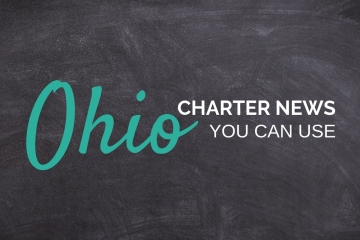
Ohio Charter News Weekly – 7.5.24
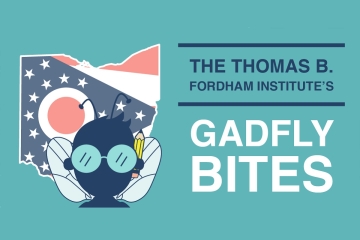
Gadfly Bites 7/5/24—The sound of nothing
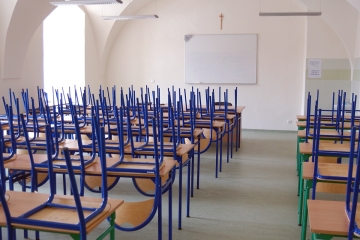
Public funding for religious schools can help ease our culture wars
- Access to the entire online library published by the Foundation for Critical Thinking.
- Digital access to all the educational materials published by the Foundation for Critical Thinking, - including posters, and laminated cards that you may freely print and use.
- Digital access to partial copies of the Thinker’s Guide Library.
- Digital access to decades’ worth of videos and audio files produced by the Foundation for Critical Thinking. This includes classic and rare video footage of Dr. Richard Paul, as well as video footage of other Foundation for Critical Thinking Fellows and Scholars, including Dr. Linda Elder and Dr. Gerald Nosich.
- Get current critical thinking news every day in our newsroom. Comment on these articles, share them with your colleagues, and rate them according to their levels of clarity, significance, relevance, and depth.
- Read the active blog of the Foundation for Critical Thinking.
- Communicate and network with any member of the Critical Thinking Café through our internal messaging system.
- Post your work products to share with your critical thinking colleagues and friends.
- Post your critical thinking research.
- Highlight critical thinking articles from our newsroom that you believe to be significant.
- Set up your own exclusive forum of critical thinking colleagues, with whom you prefer to communicate.
- Choose departments to connect with, including professional departments.
- For educators, Post and Share your instructional design strategies and activities with your critical thinking education colleagues, and discuss your classroom trials, tribulations, victories, and challenges.
- Access and create job postings in which employers are seeking employees who strive to be increasingly skilled critical thinkers.
- Join with up to five other critical thinking colleagues to form Study Groups, held online, in real time, and which you can customize according to your schedules. (Sign up in Study Groups with Members section.)
- The Wheel of Reason (which teaches the Elements or Parts of Thinking).
- Criteria Corner (which teaches the Universal Standards or Criteria for Thinking).
- The Wall of Barriers (which warns us to pay attention to the intrinsic problems of egocentric and sociocentric aspects of your thinking).
- The Triangle of Thinking, Feelings, and Desires (which teaches the conceptual relationships between thoughts, emotions, and desires while targeting thinking as the fundamental key to emotional intelligence and a healthy emotional life).
- Reading and Writing Alcove (which teaches close reading and deep comprehension of any text worth reading, while also fostering and developing your writing abilities).
- If you are in higher education administration, register as an institutional member so all your faculty and students can learn the tools of critical thinking here. We can work with your institution to offer college level credit for your students at undergraduate and graduate levels.
- Development and coordination of our annual Annual International Conference on Critical Thinking, which is the longest-running annual conference on critical thinking in the world.
- Scholarships for deserving teachers and administrators to attend our Aannual International Conference.
- Worldwide open Access to our research and assessment tools, as well as many other resources for outreach at CriticalThinking.org, (the official website of the Foundation for Critical Thinking).
- The maintenance of the Foundation for Critical Thinking Archives, which begin before the establishment of the Center for Critical Thinking in 1980.
- The development of our audio and video library, including classic audio and video footage from the Foundation for Critical Thinking Archives. Much of this material has never been accessible to the public and will increasingly be made available exclusively through the Critical Thinking Community website.
- The development of our extensive and unique library of critical thinking print materials housed at the Foundation for Critical Thinking.
Don't miss tomorrow's Higher Education industry news
Let Higher Ed Dive's free newsletter keep you informed, straight from your inbox.

How will the rise of AI in the workplace impact liberal arts education?
Experts predict that skills like critical thinking and creativity will be more coveted as artificial intelligence replaces some technical jobs.
Demand for liberal arts education has declined in recent years as students increasingly eye college programs that directly prepare them for jobs. But according to many tech and college experts, as businesses launch advanced AI tools or integrate such technology into their operations, liberal arts majors will become more coveted.
That’s because employers will need people to think through the ethical stakes and unintended consequences of new technologies. Companies may also need people to help improve the written commands given to chatbots or resolve challenging customer service disputes that AI can’t handle.
College leaders therefore need to take action as AI changes the workforce, scholars say.
While robotics in the 1990s replaced many blue-collar jobs , AI will replace jobs that require college degrees, or even graduate degrees like attorney positions, predicted Ray Schroeder , a senior fellow at UPCEA . Schroeder estimates big changes will occur over the next three to four years.
“This is really a significant factor in employment and of course, those of us in higher education are monitoring it closely because we want to be able to give our students the skills that will enable them to thrive in this emerging workplace environment,” Schroeder said .
The need for the liberal arts
ChatGPT and the large language models are predictive based on existing knowledge, said Cecilia Gaposchkin, a history professor at Dartmouth College.
One could train a computer about the ideas of ethics, human morality and a basic sense of human dignity, but that kind of reasoning is instinctual for humans, Gaposchkin said. And the tools and capacity of AI will be subordinate to the decisions people make and their priorities, Gaposchkin said.
While AI makes past knowledge available at one’s fingertips, liberal arts education trains students to creatively think, problem-solve, synthesize information, manage ambiguity, ask questions and come up with new ideas, Gaposchkin said.
“To outsource the higher-level orders to an object that doesn’t have that ethical grounding trained by human reason is a dead end,” she said.
There are many settings where people would like to use AI but the cost of failure is high, said Rebecca Willett, professor of statistics and computer science at the University of Chicago. That includes certain AI tools for healthcare, real estate, finance and criminal justice, she said.
A 2023 study from Stanford University’s medical school, for instance, showed that AI tools regenerated debunked medical ideas that were racist and could lead to worsened health disparities for Black patients.
And in 2016, ProPublica found software used by courts disproportionately labeled Black defendants as being at a higher risk of commiting a crime compared to White defendants. ProPublica, in its analysis, compared groups of defendants who did not commit a crime — throwing into question the fairness of a tool used to help with sentencing and parole decisions.
People with strong liberal arts backgrounds will contribute with “not only the technical development of these tools, but also to thinking about, how should we approach them? And what are the trade-offs associated with the choices we might make?” Willett said.
Liberal arts versus technical degrees
Students who earn degrees in liberal arts and humanities may actually have an advantage in the job market over those who specialize in STEM-based programming, argued Robert Gibson , director of instructional design at Wichita State University Campus of Applied Sciences and Technology.
That’s because liberal arts students could provide a more humanistic perspective on the technology, with an eye to ethics, privacy and bias, for example, Gibson added.
“They don’t sort of wildly go off and promote the use of this technology without sort of stepping back and saying, ‘Maybe this is how we can look at this a little bit differently,’” Gibson said.
Noting that employers are now posting job ads seeking workers with AI skills, Gibson also said AI is being used in marketing campaigns or customer relationship management systems by small businesses nationwide. That includes businesses ranging from art stores and business retailers to production companies that want workers who can wear two hats, he said.
They want workers who are not only adept with using those technologies, but also who have customer service experience, or other human experiences required for their businesses, said Gibson.
Liberal arts students could also be instrumental in developing and operating AI chatbots. “Prompt engineering,” which programs chatbots to converse with users, is an English writing capability and requires adaptability and continuous learning, Schroeder said.
Now AI can actually write code faster , and in many cases, better than humans can, Schroeder said. The U.S. Bureau of Labor Statistics projected the number of computer programming positions to decline 11% between 2022 and 2032. Companies will instead need a supervisor to troubleshoot what AI generates, Schroeder said.
“If you are in computer science and if you are coding, your job may be in jeopardy,” Schroeder said.
“To outsource the higher-level orders to an object that doesn’t have that ethical grounding trained by human reason is a dead end."

Cecilia Gaposchkin
History professor, Dartmouth College
Schroeder said he’s also seen an uptick in companies seeking applicants with interpersonal skills such as critical thinking, creativity, emotional intelligence, communication, collaboration and ethics.
“We see those more and more often in position descriptions,” Schroeder said. “While they don’t specifically say liberal arts degrees — because it’s possible to obtain some of these skills outside of college — those are skills that we emphasize in the liberal arts.”
Willett said she does not believe liberal arts will replace all technical workers. Rather the two need to work hand in hand, she said.
But between two candidates with backgrounds in data science, many employers will find the one with a liberal arts education “extremely attractive" as that allows the employees to contextualize the technical work they might be doing, Willett said.
What should colleges do?
Roanoke College is among the liberal arts institutions having discussions about where AI fits into its curriculum, said Brian Reed, vice president for student success and the Roanoke Experience.
Reed said he would like to see the small Virginia-based college create a place in its general education requirements for students to work with AI in intentional ways.
The emergence of AI will provide “a real renaissance for the humanities,” Reed said. But higher ed institutions, including liberal arts colleges, are often not great at explaining how critical thinking skills that students learn can be applied to technology like AI, Reed said.
“Institutions have to be much more clear about the skills and competencies that the students gleaned from liberal arts in really straightforward language,” he said.
A lot of higher education institutions are already starting to aggressively introduce programs or entirely new colleges around artificial intelligence, said Gibson . Institutions that are larger “thought leaders,” in particular, are poised financially for leadership to build those conversations around AI across disciplines, he said.
Earlier this year, Arizona State University announced it has been incorporating generative AI into many of its English Department courses, allowing students to use the technology to, among other things, brainstorm topics, assist with research, and help edit their papers.
Some smaller colleges are starting to have those conversations, although not as fast as Gibson said he would like.
“This is still on the periphery,” he said. It’s harder for small colleges to implement wholesale change, like cross-disciplinary courses on AI, due to bureaucratic procedures that can slow down that process.
“Institutions have to be much more clear about the skills and competencies that the students gleaned from liberal arts in really straightforward language."
Vice president for student success and the Roanoke Experience, Roanoke College
To prepare, Gibson said institutions need to start building into their liberal arts curriculum some conversations around the moral and societal implications of AI.
Reed said higher ed leaders would be doing a disservice to their liberal arts students if they are not having conversations about how they can help them embrace AI technology — so they become comfortable with it and know how to harness it in responsible and ethical ways.
Liberal arts students will need to gain competency on the technical side, said Reed . But the emergence of AI will also require people who are “really thoughtful about: How [do] we prompt? Should we prompt in certain instances? How do we sort of filter bias? How do we see through phantom responses?”
Higher Ed Dive news delivered to your inbox
Get the free daily newsletter read by industry experts
- Select user consent: By signing up to receive our newsletter, you agree to our Terms of Use and Privacy Policy . You can unsubscribe at anytime.

Editors' picks
Colleges want to move away from expensive textbooks. Can it be done?
West Texas A&M University is one of the latest institutions exploring using more open educational resources.
U of Oklahoma said it’s being forced to eliminate its DEI offices. The ACLU disagrees.
An executive order mandated that public colleges review DEI roles and potentially eliminate those unnecessary for compliance and accreditation.
Keep up with the story. Subscribe to the Higher Ed Dive free daily newsletter
Company Announcements

- How will the rise of AI in the workplace impact liberal arts education? By Danielle McLean
- How did Supreme Court’s race-conscious admissions decision impact college applications? By Naaz Modan
- Northwestern athletics lacks clear guidance for handling some misconduct complaints, report finds By Laura Spitalniak
- ‘Like climbing up Mount Everest’: Financial aid professionals describe a grueling FAFSA season By Danielle McLean
Innovations in education and skills
Innovation is a key driver of growth and wellbeing. Creating an innovation-friendly ecosystem is key to creating education systems fit for the future. This means nurturing innovation skills like creativity and critical thinking and ensuring the main drivers of innovation remain active: namely, individual, organisational and system learning.
- Fostering Students' Creativity and Critical Thinking: What it Means in School
- Measuring Innovation in Education 2023: Tools and Methods for Data-Driven Action and Improvement

Select a language
Key messages, a growing consensus that education systems should foster innovation skills.
Successful economies encourage innovation. Successful employees know how to develop new ideas and ways of working. Education needs to prepare students for working lives that will require them to consider multiple perspectives and generate novel solutions for complex problems. Learning to use knowledge creatively and critically is key to mastering subjects and disciplines. The OECD Innovation Strategy for Education and Training team explores approaches to equipping people with innovation skills and supporting innovation and continuous improvement in education systems.
More attention needed on how to foster and assess innovation skills
Whilst most agree innovation skills are important, too little is known about what this means for everyday teaching and assessment. Education’s ability to foster and monitor progress is limited by a lack of shared practical knowledge about how innovation skills materialise at different development stages. Education systems have rarely established ways to consistently nurture them and to assess them formally. Working with member and non-member countries, the OECD is developing tools to make these skills more visible and measurable for teachers, students and policy makers. These tools seek to encompass innovation skills and the subject knowledge included in the curriculum.
More measurement efforts are needed to improve education through innovation
More broadly, measuring innovation in education and understanding its drivers and obstacles is essential to improving the quality of the education sector – and of specific educational establishments. Education systems need better methods to measure whether pedagogical and administrative practices are changing in the expected direction. They need more understanding of what it means to have a positive innovation culture that supports innovation. The OECD aims to help policy makers and institutional leaders understand which factors of innovation they can influence to support educational objectives. This can be accomplished at the system or institutional level, as is often the case in other sectors, or through specific innovation projects.
The move to competency-based curricula
Many education systems, schools and higher education institutions across the OECD have moved towards competency-based curricula. They focus on what students can do with their knowledge, not just on what they know. In addition to developing knowledge, developing competences that help students deepen their knowledge and tackle complex challenges with creativity, critical thinking, collaboration and communication has become foundational in education.
Percentage of jurisdictions where the following domains/school subjects refer to creativity in system-level curricula or learning standards, by level of education (2022)

Professional learning and training for innovation
Teachers and institutional leaders also need innovation skills. Institutions need to innovate to keep pace with rapid changes in society, from the rise of Artificial Intelligence to the emergence of new professions. In turn, professional learning needs to adapt to meet these changing needs and support education actors to improve teaching and practices.
Teachers’ beliefs about creativity and critical thinking in school

More facts, key findings and policy recommendations

Create customised data profiles and compare countries

Related publications

Programmes of work and projects
- Smart Data and Digital Technology in Education: Artificial Intelligence, Learning Analytics and Beyond Data and digital technologies are among the most powerful drivers of innovation in education, offering a broad range of opportunities for system and school management, as well as for teaching and learning. But they also create new policy issues as countries face challenges to reap the benefits of digitalisation in education while minimising its risks. Learn more
- Trends Shaping Education Preparing for the future means taking a careful look at how the world is changing. Reflecting on alternative futures helps anticipate and strategically plan for potential shocks and surprises. Learn more
- Artificial Intelligence and the Future of Skills Artificial Intelligence (AI) and robotics are becoming increasingly sophisticated at replicating human skills. The evolution of these technologies could fundamentally transform work over coming decades and deeply affect education’s current role in providing skills and preparing learners for future work. Learn more
- 21st Century Children Understanding the nature of 21st Century childhood is crucial for an education that is increasingly expected to support students to thrive in both a digital and non-digital world, delivering academic learning while also building physical and emotional well-being. This has implications for the skills, capacity and resources required. Learn more
- New Professionalism and the Future of Teaching The OECD’s expanding evidence base has highlighted the importance of high-quality teachers and teaching in education. Yet, challenging questions remain, and there is a need for space in the teacher debate to anticipate future developments, to strengthen professional identity and to support proactive teacher policy making. Learn more
- Teaching, Learning and Assessing Creative and Critical Thinking Skills Creativity and critical thinking prepare students for innovative economies and improve wellbeing. However, educators often lack guidance on how to equip students with creativity and critical thinking within subject teaching. Education systems have likewise rarely established ways to systematically assess students’ acquisition of creativity and critical thinking. Learn more
- CERI The Centre for Educational Research and Innovation (CERI) provides and promotes international comparative research, innovation and key indicators, explores forward-looking and innovative approaches to education and learning, and facilitates bridges between educational research, innovation and policy development. Learn more
- Education Policy Outlook The Education Policy Outlook is an analytical observatory that monitors the evolution of policy priorities and policy developments from early childhood education to adult education, mainly among OECD education systems, to provide a comparative understanding of how policies are evolving, and how they can be best implemented or improved over time. Learn more
- Education and Skills Policy Programme The OECD’s programme on education and skills policy support policymakers in their efforts to achieve high-quality lifelong learning, which in turn contributes to personal development, sustainable economic growth, and social cohesion. Learn more
- Future of Education and Skills 2030 OECD Future of Education and Skills 2030 aims to build a common understanding of the knowledge, skills, attitudes and values students need in the 21st century. Learn more
- Global Teaching InSights Add a short description – maximum 200 characters (4 lines). This should outline the OECD’s mandate and the main issues/challenges with respect to the project. Writing style and tone should be clear, to the point, and jargon-free. Learn more
- Higher Education Policy The Higher Education Policy Programme carries out analysis on a wide range of higher education systems and policies Learn more
- PISA Research, Development and Innovation (RDI) Programme The Research, Development and Innovation (RDI) programme established by the PISA Governing Board in 2018 explores how different areas of the assessment programme (e.g. test design, scoring methodologies) can be improved. Learn more
- Resourcing school education for the digital age Since 2013, the OECD has gathered evidence on how school resource policies work in different contexts. The focus is now on digital resources to enable countries to learn from each other in the digital transformation of their education. Learn more
- Schools+ Network Meeting the challenges of the 21st Century means that schools must be empowered to play a more central and active role in leading improvements in education. To support this, Schools+ will bring together major education networks to put schools at the centre of education design. Learn more
Related policy issues
- Future of education and skills
- Digital education
- Artificial intelligence and education and skills
- Education research
- Trends shaping education and skills
- Digital divide in education
- SI SWIMSUIT
- SI SPORTSBOOK
Lakers News: JJ Redick Thinking Progressively in Critical Behind-the-Scenes Respect
Ricardo sandoval | jul 6, 2024.

- Los Angeles Lakers
The Los Angeles Lakers are about to embark on an intriguing journey, and there's still time for the roster to change before the season starts. Leading the way, no matter how the team shapes up, will be head coach JJ Redick. Redick, entering his first-ever season as a head coach, will helm the most storied and renowned franchise in all of sports.
The expectations are sky-high, despite it being Redick's first-ee stint in this role. Naturally, he will be under intense scrutiny, but he seems ready for the challenge and eager to implement his coaching style.
According to Jovan Buha of The Athletic (h/t to @Klutch_23 for the find), Redick plans to be highly analytical and numbers-driven. He also plans on being more appealing to younger players.
( @jovanbuha @TheAthletic ) - Redick plans on being a high analytic and numbers guy. - The Lakers are considering designing an app for Redick to share his gameplan and strategies with his players. Modern generation. pic.twitter.com/UWhSgoV0rV — 🎗NBA•Fan🎗 (@Klutch_23) June 25, 2024
We've seen the benefits and drawbacks of such an approach, not just in basketball but across all sports. This style might work well in the regular season, but the postseason is a different beast. While it's too early to judge, it's promising to see Redick and general manager Rob Pelinka have a game plan and adopt a forward-thinking approach in this constantly evolving game
Basketball, like all sports, is continually changing, and Redick aims to stay one step ahead. His analytical approach could offer fresh insights and strategies that push the Lakers forward. As the season progresses, it will be fascinating to see how Redick's methods translate to the court and whether they can propel the Lakers to new heights.
More Lakers: LA Officially Signs Two Undrafted Rookies to 2-Way Contracts
RICARDO SANDOVAL
Staff Writer
Follow @_RicardoSand

IMAGES
VIDEO
COMMENTS
A systematic literature review (SLR) has been performed to identify previous studies on evaluating the credibility of news, and in particular to see what has been done in terms of the use of critical thinking to evaluate online news. During the SLR's sifting process, 22 relevant studies were identified. Although some of these studies referred ...
How to use news literacy to teach critical thinking Step 1: Develop disciplinary literacy in the news. ... Critical thinking is critical in today's world. Using the news in classrooms can authentically develop higher-level thinking skills and dispositions. Combining understanding of how journalism works along with topical content allows ...
While there are many studies involving fake news and tools on how to detect it, there is a limited amount of work that focuses on the use of information literacy to assist people to critically access online information and news. Critical thinking, as a form of information literacy, provides a means to critically engage with online content, for ...
Critical thinking is a key component of news media literacy, as it allows individuals to assess the accuracy and credibility of news sources, identify biases and misinformation, and make informed decisions. Critical thinking involves questioning assumptions, evaluating evidence, and considering multiple perspectives, which are all crucial skills for navigating our complex and constantly ...
1. Don't just read the headline — dig deeper. Read the full article and assess the sources of the claims. 2. Look for evidence, not opinion (unless it's a relevant expert's opinion ...
Fake news became prominent during the US election, with supporters of both sides tweeting false information in the hope of influencing voters. But it is nothing new. "The report of my death was an exaggeration.". In May 1897, Mark Twain, the American author, was in London. Rumours reached the US that he was very ill and, later, that he had ...
News Literacy: Critical-Thinking Skills for the 21st Century. Three methods for teaching critical thinking skills and smart media consumption habits to a generation growing up in a climate of information overload. Every teacher I've worked with over the last five years recalls two kinds of digital experiences with students.
Critical readers of the news reverse each of these maxims. This Mini-Guide explains how to do this and thus reduce the influence of bias and propaganda on the mind. Richard Paul Center for Critical Thinking Foundation for Critical Thinking. Third Edition. 2004 Foundation for Critical Thinking. www.criticalthinking.org.
Critical Thinking How To Spot Fake News Blog post from FactCheck.org on recognizing fake news by Eugene Kiely and Lori Robertson, posted on November 18, 2016
S ystematic Literature Review*. Paul Machete and Marita Turpin1 [0000-0002-4425-2010] 1 Department of Informatics, University of Pretoria, Pretoria 0001, South Africa. [email protected] ...
What is News Literacy? Find out more about News Literacy and why it is an essential tool in today's world.
In the latest Research Matters column in Educational Leadership, McREL President and CEO Bryan Goodwin looks at what critical thinking really is and how it can best be taught. Its complexity—a mixture of dispositions and skills including valuing inquisitiveness and other points of view, using logical reasoning to support arguments, and ...
A recent article in Foreign Policy considered the ways in which false news stories designed to aggravate existing social problems spread on social media, with the author contending that the strength of Finland's education system has led to 'widespread critical thinking skills' (Standish, 2017: para.10) which have effectively equipped the population to defend itself against disinformation.
6. Ask lots of open-ended questions. Curiosity is a key trait of critical thinkers, so channel your inner child and ask lots of "who," "what," and "why" questions. 7. Find your own reputable ...
Instead, make an effort to keep your critical thinking skills sharp. Always challenge your own assumptions and biases. Use a combination of your own experience as well as data that has proven to ...
by Terry Heick. 1. In the article, headline, or social share, 'who' is saying 'what'? That is, what specific author and publication are making what kind of claim about what topic or ideas? 2. Is what's being said fact or opinion? 3. Does this headline seem true? (This is especially critical for 'fact-based' headlines.)
We can commonly acknowledge five elements of Critical Thinking, and these are: Analysis: The ability to examine information or situations carefully and methodically, breaking them down into their component parts to understand their structure, relationships, and underlying assumptions. Evaluation assesses the credibility, validity, and relevance ...
The media we consume can inform, educate, entertain or convince us. It influences the way we see and think about ourselves and the world around us. If we have good media literacy, it can stop us from getting stressed out by the confusing or negative things we see in the media. It can also help us focus on all the useful media that helps us to ...
Knowing that the news we consume can be biased, misreported, or even fake, it's crucial that all of us—especially young people—learn to decode the information we encounter. As kids get older, parents and caregivers can help them become better critical thinkers.
According to the University of the People in California, having critical thinking skills is important because they are [ 1 ]: Universal. Crucial for the economy. Essential for improving language and presentation skills. Very helpful in promoting creativity. Important for self-reflection.
Critical thinking is regularly cited as an essential twenty-first century skill, the key to success in school and work. Given our propensity to believe fake news, draw incorrect conclusions, and make decisions based on emotion rather than reason, it might even be said that critical thinking is vital to the survival of a democratic society. ...
Joe Árvai, USC Dornsife College of Letters, Arts and Sciences. Critical thinking means seeking out new information - especially facts that might run contrary to what you believe - and being ...
Thinking critically is a key competence, more than ever in these unprecedented and uncertain times. It enables source evaluation, argument construction, and reasoning. Sage recognizes the importance of critical thinking skills not only in fighting bias and misinformation campaigns, but in day-to-day life: the classroom, the workplace, and beyond.
The Critical Thinking: Going Deeper Podcast Reaches Its 20th Episode - June 6, 2023. In Critical Thinking: Going Deeper, Drs. Linda Elder and Gerald Nosich go beyond the fundamentals to explore deeper layers of critical thinking theory and how these more complex ideas can be applied to learning, teaching, work, and life.Today, the series released its 20th episode.
Inquiry-based learning in STEM classrooms, long a contentious topic, has been making news since the introduction of the controversial California Math Framework. This student-led approach aims to foster engagement by sparking curiosity and critical thinking. Rather than passively receiving knowledge from an instructor, students take an active role in their learning by searching for evidence ...
Get current critical thinking news every day in our newsroom. Comment on these articles, share them with your colleagues, and rate them according to their levels of clarity, significance, relevance, and depth. Read the active blog of the Foundation for Critical Thinking.
Local News; Student essay: Critical thinking class should be open to more teens . July 1, 2024 at 6:00 am Updated July 1, 2024 at 6:00 am . By . Raika Roy Choudhury.
Higher Education News. While robotics in the 1990s replaced many blue-collar jobs, AI will replace jobs that require college degrees, or even graduate degrees like attorney positions, predicted Ray Schroeder, a senior fellow at UPCEA. Schroeder estimates big changes will occur over the next three to four years. "This is really a significant factor in employment and of course, those of us in ...
Innovation is a key driver of growth and wellbeing. Creating an innovation-friendly ecosystem is key to creating education systems fit for the future. This means nurturing innovation skills like creativity and critical thinking and ensuring the main drivers of innovation remain active: namely, individual, organisational and system learning.
Jul 2, 2024; El Segundo, CA, USA; Los Angeles Lakers coach JJ Redick at a press conference at the UCLA Health Training Center. Mandatory Credit: Kirby Lee-USA TODAY Sports / Kirby Lee-USA TODAY Sports